#despite it being approved since 1985
Explore tagged Tumblr posts
Text
Why is there not much research on regular people using NAC to lower the risk of liver issues from long-term Tylenol usage? NAC an over the counter supplement anyone can buy, so why are we not discussing it? Do we just not want to acknowledge how many people rely on Tylenol daily despite the risk to their livers?
I'm being serious. NAC has been FDA approved for prevention of Tylenol overdoses since 1985. Multiple studies have been done that show it reducing liver damage as well in this context, shown in this meta analysis by NIH.gov (in case you dont want to go down the rabbit hole). It has been there for years and has years of studies being done on overdose victims, so why have we not looked deeper into it for long-term Tylenol users; the retail and construction workers who need it just to push through their jobs?
#medical#tylenol#nac#supplement#discussion#discourse#retail#construction#work#pain#chronic pain#liver#liver damage#yes i did throw in some emotional calls there#i actively want discussion on this#even if i need to use dirty tactics to get it#i could not find any good studies on this question besides for overdoses#despite it being approved since 1985#I'm even seeing studies on NAC for mental health reasons#the reason im even looking is because my psych put me on it in that regard#but i could not find anything for the people who use Tylenol long term#either I'm really blind#do not know how to look in the right places#or there is a great injustice being done
1 note
·
View note
Text
Byler Analysis: Mike’s phone calls.
This analysis is going over why Mike’s phone calls were, without a doubt, for Will. Bylers have been talking about this for months now, but I’ve compiled all the evidence I could find.
So, to start us off...
Hawkin’s Lab is owned by the ‘Department of Energy’, which according to Mike, Ted has said is Government/The Military.
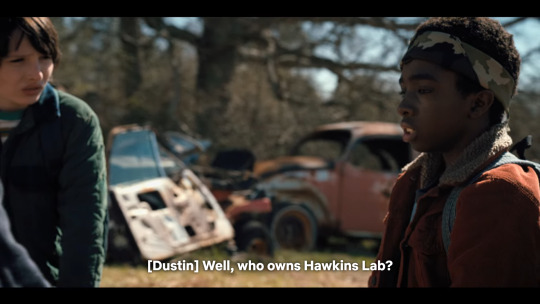


In S1, the main antagonists in regard to Hawkins Lab were Connie Frazier and Dr. Brenner. However, by the season finale, Connie was killed by Eleven and Dr. Brenner’s status was unknown.
With the two of them out of the way, we are introduced to Dr. Sam Owens in S2.
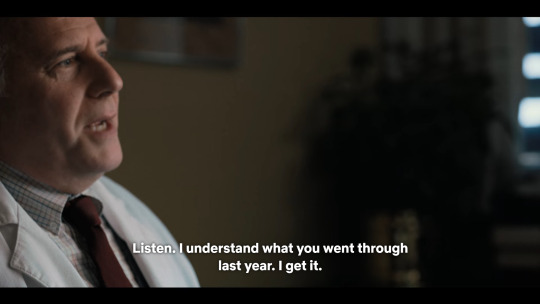


Now, whether or not Owens is truly trustworthy or not is a whole other can of worms, but for the sake of this analysis, we will follow his introduction as an ally to the Byers-Hoppers. He was the primary doctor looking after Will and investigating what was going on with him when he was possessed by the Mindflayer. S2 concludes by letting us know that Owens has pulled some strings to give Eleven a new identity and thus a new life: that of JANE HOPPER.
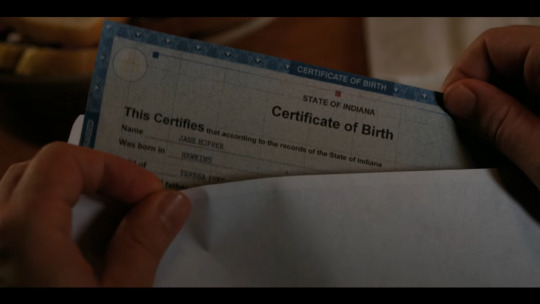

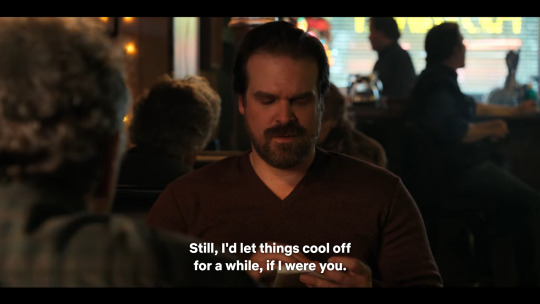

Owens recommends to Hopper that Eleven should lay low for about a year before living freely, as a PRECAUTION (since, like he said before, ‘those people’ aka the bad ones, are gone), but overall, things are safe enough that Owens even approves of Hopper letting Eleven go to the Snow Ball.
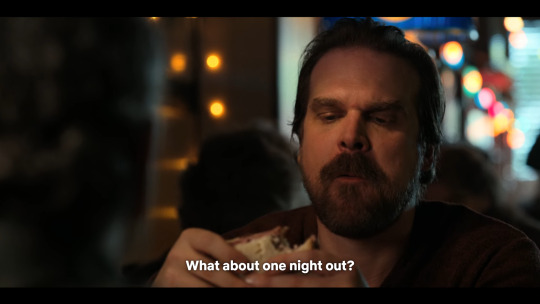

S3 starts in June 1985, about six months after S2, which means Eleven’s year of laying low isn’t done yet. But since Owens is in charge of the lab, Eleven and Mike can call on the phone. We also see them using walkie-talkies, so I’m assuming that they don’t call that often as a precaution as well, but they can do it as long as it’s not too frequent.
It is important to note that the lab was not the main antagonist in neither S2 nor S3 (It was the Mindflayer & Russians respectively).
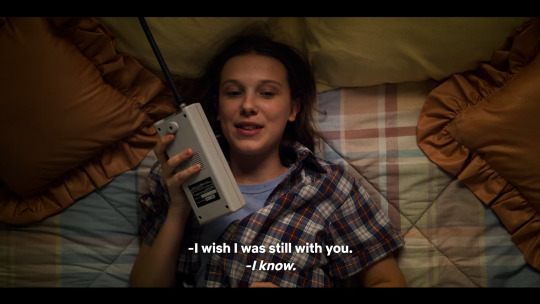

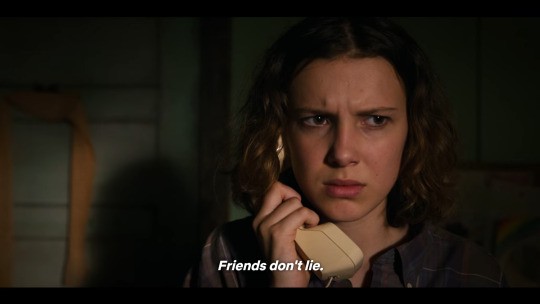

Eleven can even afford to go out a couple of times to the mall with Max without consequence at all. It isn’t until things get bad enough with the ‘flesh flayer’ that the military immediately steps in to cover it all up (and despite their best efforts, the town is still suspicious).
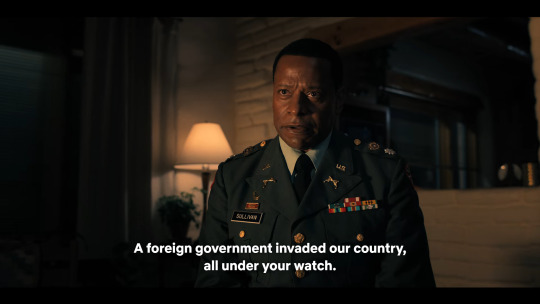
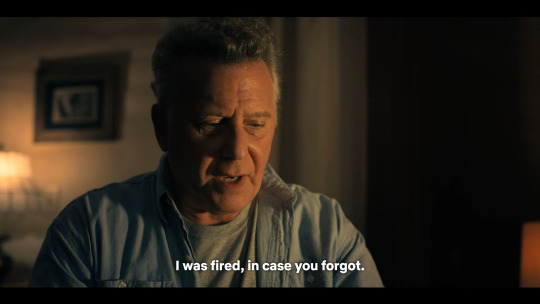
Owens is FIRED at the end of S3 as a consequence of the mall “fire”. This is significant because it means that he no longer holds the power to protect Eleven. Still, he managed to use his contacts (which include allies like Ellen, Wallace, and Hamon) to relocate Eleven + the Byers to Lenora and look after them very discretely.

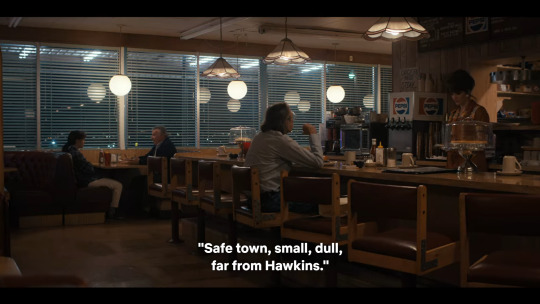
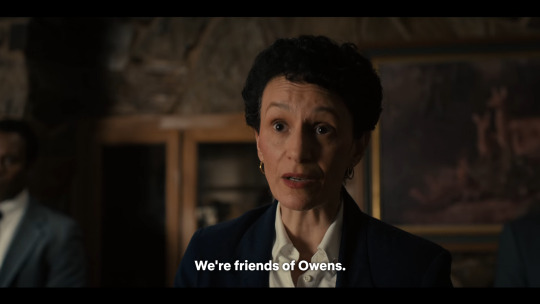

Because of this plan, Eleven is safe in Lenora enough to go out and have a life as Jane Hopper. However, that plan does NOT include calling Hawkins as that would be FAR TOO RISKY.
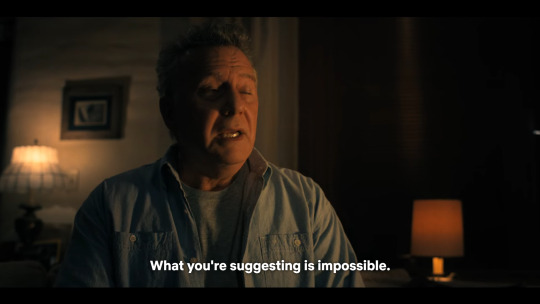

She cannot call or be called from Hawkins as it is no longer just a precaution, like when Owens recommended Eleven to lay low for a year, just in case. Now, her staying away from Hawkins (which includes calling there since the phone-lines are tapped) is a NECESSITY for her long-term survival since the cover story is that ‘Eleven is dead’.
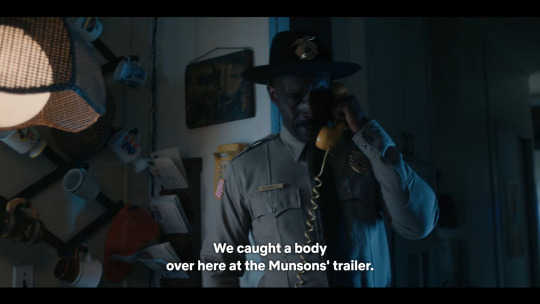

Powell’s call about Chrissy’s murder is enough to immediately summon Sullivan to investigate and pin the murders on Eleven. He even tells Owens that there are rumors of her being alive and receiving help from the ‘inside’ aka Owens. WHICH IS TRUE. So, they’re onto Owens and ALL OF THEM require to be extra careful with calling to Hawkins.
Mike was likely not able to talk about Eleven/Jane much during his calls with Will either.


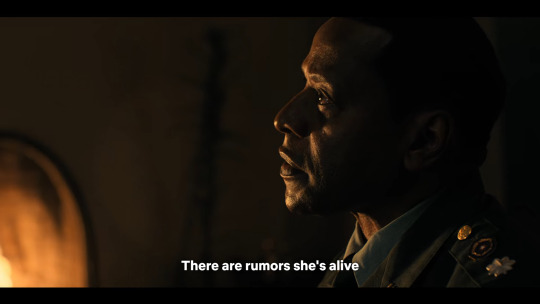

THIS is likely why we see a walkie-talkie on Eleven’s Mike box and why Mike spoke about stealing Cerebro from Dustin at the end of S3.
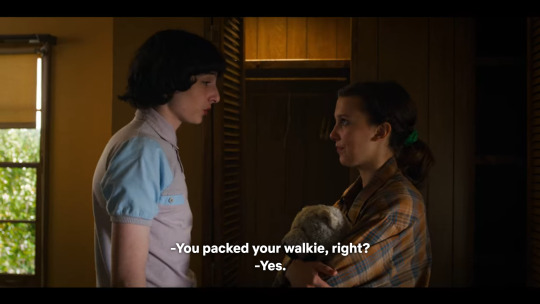




HOWEVER, because the mail system isn’t under surveillance like phone lines are, LETTERS were established as Mike and El’s primary method of communication.
Whether or not Mike truly did steal Cerebro from Dustin to call El a few times, we see Cerebro at the top of Dustin’s house in what seems to be a very permanent set-up. I personally think this implies Cerebro hasn’t been moved, and their communication happened solely through letters.
But even if, say, Mike went to visit Dustin to use Cerebro (which wasn’t established, but is within the realm of possibilities) it doesn’t change the fact that phone calls were off the table, and thus, those were for Will and Will alone.
So, as Will himself explained, the letters were for Eleven, and phone calls were for HIM.


Which means ... this was all about Mike being unable to reach WILL.


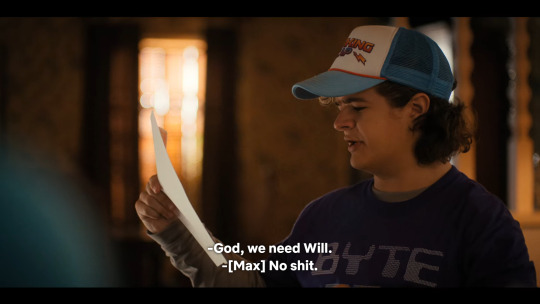

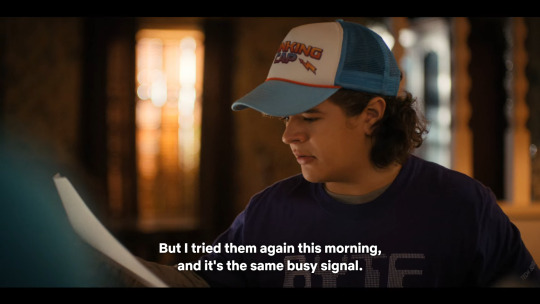
Byler is endgame
729 notes
·
View notes
Text
[I decided to make a compilation post of Martin's stim/tic. 'Cause that's a perfectly normal thing to do. It's a lot of text, but if you just want to see the moments, I made all the relevant timestamps blue, 'cause that's a fun color. Honestly, this is becoming A Problem for me.]
So here's the deal. Recently, I was made aware that Martin has this stim/tic where he sticks his tongue out and bites at his lips, often without seeming quite aware of it. It sorta fascinates me (and it's cute), so I decided to keep an eye out for it.
(Usually I tend to rather closely watch his gaze dart around in every direction as if he has no idea where to look. I definitely think it's at least partly an anxiety thing, but now I wonder if it's also an eye contact issue. Ah yes, that thing I never do and always forget about.)
Actually, it's not hard to find footage showing this behavior, so I've compiled a list. As I was watching these vids, I observed actions that I would place into three rough categories: Martin outright sticking his tongue out, Martin biting/pulling at his lips with his teeth/lips, and Martin sort of... very visibly licking his lips, I guess. The third category is hard to describe, which makes the timestamps I've listed quite useful for comparison. Additionally, I've noticed that sometimes he looks down just before or while he does these things, as if he's a bit self-conscious. Other times, he just goes for it. There are also moments whether by angles or video quality or just his movements, one doesn't necessarily see his tongue, but his mouth moves in this very characteristic way which strongly implies to me that he's doing something of this sort. Many of those (some from videos not featured here) seemed too minor to list, so I didn't. I think he has a lot of mouth tics that are just difficult to describe. Interestingly, I also noted Dave and even Fletch licking their lips, though they (usually) did it less often and more discreetly than Martin. (I've colored Dave's timestamps green and Fletch's yellow.) Frankly I don't know what the threshold is for it to cross over from being done in an average/normal way to being done in a tic/stim way. I likely didn't even catch all of the times Fletch and Dave do this sort of thing, as whenever Martin is visible, he has my complete attention.
As an aside, I also have the impression that the way he's always raising his eyebrows is also part of this to some extent. I also noticed that he rubs the sides of his nose a lot. In addition, it seems to me that much of his laughter is very… nervous. Forced, even. Seeking approval, even. It wouldn't surprise me if those are also tics/stims. It's as if he's always laughing things off that he otherwise… wouldn't. I know it's been >40 years, and there's absolutely nothing I can say that hasn't been said 100 times before, but man. I feel alone in this anyway.
The list included here is certainly not exhaustive, however, since I haven't seen every video... and frankly, I don't really want to. I'm being insane enough as it is. Might not stop me in the end, though... The major thing I wanted to do here is showcase it across the decades. The vids from the 80s do seem more... plentiful? Easier to find? I will say they're definitely easier to comb through despite the often very poor quality.
But anyway, I digress. On to footage of Martin doing the things.
First up is a vid from 1985 that's split into two parts. In the first part, he does it at 1:43. In the second part, he does it within the first second (and someone even commented on it) and then again at 0:05 and 0:54. Poor baby really seems like he's dying of boredom this entire time, constantly wiggling and fidgeting with his bracelets and staring off into the middle distance. But I do appreciate him knowing the name of (one of) the diacritics they dropped for the band name, and him hiding behind his hand at the end is extremely cute.
This next one, dated May 4, 1985, is a treasure trove. He does it twelve times in just under nine minutes-- and that's just what's actually visible! I doubt there's a video in existence with a higher rate of Martin doing the thing. It did occur to me that the second part of the previous interview is quite a short video itself, so I actually did the calculation. It turns out that this video's rate is ever so slightly higher. [2x60+16=126 seconds and 126/3=45.333... (once per 45 seconds on average) vs 8x60+49=529 and 529/12=44.08333... (once per 44 seconds on average)] Here's the whole list: 0:28; 1:03; 1:33; 1:43; 1:57; 2:33; 2:37 (though obscured by the potato quality); 5:20; 5:47; 6:37; 7:34; 8:34. There could also be a subtle one at 3:14, but I can't tell for sure due to the quality. He must be spectacularly bored and uncomfortable. The talk about Martin's A-Levels is also intriguing to me. My limited understanding is that they're preparatory classes for university, which leads me to liken them to all of the advanced/college prep classes I took. I thought I read somewhere else that he did do five of them, but he only admits to two here (French and German, I think?). I wonder where the five number came from, then. Perhaps just people's tendencies to exaggerate.
Next is a French TV interview dated May 7, 1986. One of the commenters was even nice enough to list all of the times for us: 1:36, 3:51 (though I'd rather link 3:49), and 5:23 (though I'd also rather link 5:22). Incidentally, 3:49 is the second gif from the post I linked up top.
The next example is from 1987. Martin does the thing at 0:16 and 0:55. 0:16 is the first gif from the post linked up top.
I also found a video of an MTV interview plus the band recording IDs ahead of the Rose Bowl concert, dated April 26, 1988. There's another video that's just the IDs, amusingly notable because its thumbnail features Martin sticking his tongue out. Times when Martin does the thing are: 0:16; 6:32; 9:14; 10:09; 10:38; 11:31.
The next vid is dated September 7, 1988. Martin only does the thing at 1:29, but it's right when the interviewer sticks the mic in his face, which greatly amuses me. This vid also has the acid house moment.
Next up is a VH1 interview from 1997. The subject matter here is pretty rough, but my German isn't good enough and the dub is too dominant to fully understand what they're saying. That remark Martin made about Dave's family, though... holy fuck. That whole exchange was just brutal to behold. Timestamps featuring Martin are: 3:36; 6:06; 19:03; 24:21; 27:13; 28:23; 29:34. Interestingly, I also spotted Fletch doing it at 8:48 and Dave doing it at 9:42 and 19:53.
Following that is the Singles Tour press conference, dated April 20, 1998. I found the subject matter pretty boring, but it has plenty of relevant moments: 4:25; 11:00; 12:24; 14:45; 17:00; 17:50; 18:34; 20:43; 21:59; 23:20; 25:15; 25:22; 28:46. I spotted Dave doing it thrice, at 13:24, 16:01, and 19:03.
Here's a vid consisting of B-roll footage from 2000. This vid is of particular note because it consists of footage not from any public appearance. Martin does the thing while he's on the phone at 5:12, and Anton even zooms in on it (which I find highly amusing). At 6:44, he appears to start running his tongue around the inside of his cheeks. Aside from those, Martin in the rocking recliner is just adorable to watch. Makes me want a rocking chair/recliner to rock in. It's been so long. Is it even possible to not rock in a rocking chair?
Next up is an interview from 2005. We get to see Martin's tongue right out the gate, but it turns out that we don't get to see much of him in this vid-- it's really a montage of Dave doing the thing, and does he ever: 8:00; 8:57; 9:41; 10:45; 13:04; 13:43; 14:29; 14:43; 16:17; 17:15; 18:14; 21:25; 22:07; 22:49. Fletch joins in at 11:46 and 19:32.
Here's a short vid from 2009. We see Martin do the thing at 0:10. This segment was painful to watch. I get the impression the host is fishing for something lurid from Martin, and Martin's not having it. Maybe there's some culture clash at play, like there might be regarding the next example.
That example being one from 30 March, 2013. Hoo boy, do I have some words for this. Even aside from the culture clash debate about the questions themselves (which are primarily directed toward Dave), no part of this interview landed with me. In particular, the swipe at Martin at the beginning really rubs me the wrong way. Dave comes off unbothered on the whole, but Martin seems so uncomfortable the entire time. Anyway, I noticed the thing at 5:27, though it's somewhat obscured by the angle here.
Here's another French TV one from 2017. The camera cuts to him with his tongue out at 3:57, and he does it again at 7:48.
To sidestep for a moment, I noticed something in an interview from 10 October, 2022. Strictly speaking, what I observed at 11:36 is that he seems to go for it and then stop himself. Honestly, that in itself is also rather interesting, but I'm not quite sure how to articulate that interest. Maybe that it seems to clash with the rest of what I've compiled? I do wonder if in this instance, I'm seeing something which isn't actually there. On the other hand, watching a few current vids, it seems that he tends more to do more subtle things that are harder to describe and leave me uncertain as to whether I should list them. Considering what originally drove me to make this list, though, I chose not to. I've still noticed his gaze darting around plenty, though.
Lastly, here's the first part of an Apple Music interview from (I think) March 2023. You can see Martin stick his tongue out at 10:49, and at 5:36 he also does something with a similar vibe but more subtle. I think that first timestamp of him doing it even now in this very year really shows how ingrained and not quite conscious it is, as well as it being a lifelong habit.
I'm certain I could go on finding more and more footage of these behaviors, but I think I've made the major points well enough for these informal purposes. Now, as for why this is A Problem for me in particular. Watching him do this, observing it so closely and cataloguing it in this way, has made me realize all of the similar (and in some cases the same) things I and I'm pretty sure one of my parents do. There was a particular moment a couple weeks or so back when I suddenly caught myself licking my lips sort of like these moments, and now I'm super aware of it and can't stop. I don't even know whether it's something I've always done and never really realized before or if it's new or what-- I certainly don't want to think I'm that impressionable... I've noticed I do it most often when I'm about to start chewing on my lower lip. Because that's a big thing of mine: chewing on my lips and cheeks and tongue. And I do it (and have done it for many, many years) nearly constantly. I think I actually replaced chewing on necklace chains and shirt collars with this at some point in my youth. Considering Martin's tics/stims has really brought to my attention the sheer number of little tics and habits I have and have had throughout my life. I don't know what any of that says about me-- it's not something I get to know, and that troubles me when I think about it. So like. This topic fascinates me, but it also stresses me out.
But ah, that's enough getting personal for now. I don't have anything more to say at the moment, so I'll call it done. Props to anyone who bothered to read all of this. It's definitely my tumblr magnum opus in terms of both depth and sheer insanity of chosen subject matter.
I got so stressed making this post. Please validate me.
#Depeche Mode#Martin Gore#Martin does the thing#And apparently so do I#And maybe Dave and Fletch as well#Poor Marty's losing his damn mind in most of these#I would also lose my damn mind#So not an ounce of blame from me#Oops got pretty personal there#Analysis#That no one asked for#Oh god he'd hate me for this#Even though I do it with only affection in my heart#>_>#Art of Content
7 notes
·
View notes
Text
2023 Movie Odyssey Awards
And now, the penultimate step to conclude the 20223 Movie Odyssey. The Movie Odyssey Awards honor the best in films that I saw for the first time last calendar year for me. Rewatches do not count. Other eligibility rules (such as whether or not a “TV movie” versus a “streaming movie” can count can be found here).
All of these films that were nominated or won (except for Worst Picture) are worth your time and are worth seeking. Even some of the most flawed films I saw this year managed a nomination somewhere - it helps there are ten nominees per category. And, as always, my Best Picture winners are my highest recommendations of the year.
There's also a new category this year! Another music category (some of you are already sighing, I know) in the form of Best Original Score Cue.
Best Pictures (I'm naming ten, I'm not distinguishing one above the other nine)
Anatomy of a Fall (2023, France)
The Color Purple (1985)
I Know Where I’m Going! (1945)
Killers of the Flower Moon (2023)
The Last Command (1928)
Oppenheimer (2023)
Past Lives (2023)
The Prime of Miss Jean Brodie (1969)
Spider-Man: Across the Spider-Verse (2023)
Tár (2022)
For the second straight year, I have set a record low for the number of feature films that I saw in a calendar year since when this blog began (2012). And on my failure to adhere to my objective on seeing more pre-1980 movies than those released 1980 and after, this Best Picture list skews far more modern than it usually does. This is also the first Movie Odyssey Award for Best Picture slate without a 10/10 rated film.
Six movies from the 2020s doubles the record (set last year, with three) of Best Picture winners that have come from the current decade.
Anatomy of a Fall, through its courtroom drama lens, remarks on unknowability of even the people we love most. Steven Spielberg's adaptation of Alice Walker's novel The Color Purple is melodrama (a word I'm using here in the neutral sense) of the first order, and tenderly told. The romance I Know Where I'm Going! is not often mentioned when it comes to Powell and Pressburger films (it seems like their first postbellum film despite being set during WWII), but I think scholarship is coming around on that (and I approve).
Martin Scorsese looks like he is getting a lot of short shrift from critics and the industry for Killers of the Flower Moon as another movie dominates 2023's headlines instead. But I thought his adaptation of David Grann's non-fiction book was the best release of 2023, a dramatic epic set on the Oklahoma prairie retelling a horrible saga that American history forgot. Director Josef von Sternberg and Emil Jannings may have had a tumultuous working relationship, but this visually striking silent film makes incredible use of blocking of extras and an arguably career-best performance by Jannings.
Taking much of Killers of the Flower Moon's thunder is Christopher Nolan's Oppenheimer, surely one of the movies to define 2023. Nolan's 181-minute biopic epic is arguably his most humanistic film yet (for a director not known for his humanism). On a far different scale, Celine Song's Past Lives was perhaps one of the best romantic dramas I've ever seen in a theater.
Spider-Man: Across the Spider-Verse made its predecessor look safe by comparison with its wild variety of styles. Points off for its necessarily heavy exposition and incomplete narrative (it is the first part of two), but its radical background changes, ever-changing color palette, and comprehensible action choreography put the MCU to shame.
Lastly, Tár was very much overshadowed by Everything Everywhere All At Once last year, perhaps unfairly so (it doesn't help that when people hear that the film is immersed in the world of classical music, they immediately lose interest). And The Prime of Miss Jean Brodie was perhaps the film that shocked me the most all year, partly due to my expectations beforehand. Maggie Smith plays the title character in an atypical "teacher movie".
Best Comedy
American Fiction (2023)
Beauty’s Worth (1922)
Beverly of Graustark (1926)
Block-Heads (1938)
Fanfan la Tulipe (1952, France)
The Ghost and Mr. Chicken (1966)
Heathers (1988)
The Holdovers (2023)
My Year of Dicks (2022 short)
An Ostrich Told Me the World is Fake and I Think I Believe It (2021 short)
This comes down to which movie made me laugh the most. I don't think this was that great a year on the comedy end, but Alexander Payne's The Holdovers is destined to be a Christmas classic. A Christmas classic for the sadsacks among us.
I thought The Ghost and Mr. Chicken was going to be utterly terrible. I mean, look at that frigging title. I respect Don Knotts for his Andy Griffith Show work, but I have to be in the right mood. But boy, it was ideal October viewing when I didn't want to watch a straight horror movie. Attaboy, Luther!
Appearing from the Academy Award for Best Animated Short Film slate last year are My Year of Dicks and An Ostrich Told Me the World is Fake and I Think I Believe It. If I was still doing the Movie Odyssey For-Fun Awards, those two would tie for "Best Title". Not even close. It helps that they both made me laugh a lot!
Best Musical
Barsaat (1949, India)
Carmen Jones (1954)
Êsse Mundo é Meu (This World is Mine) (1964, Brazil)
The Fabulous Senorita (1952)
Girls! Girls! Girls! (1962)
Guillermo del Toro’s Pinocchio (2022)
Sparkle (1976)
Sun Valley Serenade (1941)
This is the Army (1943)
Trời Sáng Rồi, Ta Ngủ Đi Thôi (Good Morning and Good Night) (2019, Vietnam)
This category has always advantaged original musicals rather than stage adaptations. And the more songs, the better. Just edging out Barsaat and Sun Valley Serenade is Carmen Jones, an adaptation of Oscar Hammerstein II's adaptation of George Bizet's Carmen. Bizet's music remains; Hammerstein wrote the lyrics. Instead of Sevilla, we find ourselves in the American South and all-black cast starring Harry Belafonte, Dorothy Dandridge as Carmen, Pearl Bailey, Olga James, and Joe Adams. An important work, and one of the very few major studio Hollywood movies with an all-black cast. You'll have to get used to both Dandridge and Belafonte being dubbed (their voices not suitable to sing in an operatic style, so director Otto Preminger thought). however.
Sparkle could have won this had they adhered more to the late '50s/'60s Motown sound a lot more faithfully. And if, narratively, the movie was better.
Best Animated Feature
The Boy and the Heron (2023, Japan)
Ernest & Celestine: A Trip To Gibberitia (2022, France)
Guillermo del Toro’s Pinocchio
Marcel the Shell with Shoes On (2021)
My Father’s Dragon (2022)
Nimona (2023)
Puss in Boots: The Last Wish (2022)
The Sea Beast (2022)
Spider-Man: Across the Spider-Verse
Suzume (2022, Japan)
ATSV wins this category, but Ernest & Celestine took my heart yet again. Do yourself a favor: please see both the 2012 original and the sequel. The former is one of the best animated features of the young century and though the latter is not as good as the original, it's still very much worth your time.
I was a little disappointed in The Boy and the Heron and, to be honest, I disliked Marcel the Shell and Nimona - an opinion that, if I said this any louder, would invoke the wrath of many on tumblr. Cartoon Saloon misses for the first time with My Father's Dragon. The hot streak had to end some time! Puss in Boots was the biggest surprise in terms of expectations versus how good the movie actually was.
Best Documentary
Fire of Love (2022)
For Tomorrow (2023, Canada)
In Living Memory (2022 short)
Pianoforte (2023, Poland)
Refuge After War (2023)
The Stroll (2023)
Seen as part of the 2023 Sundance Film Festival. An HBO documentary, The Stroll is made by two transgender directors telling the story of the sex workers strolling around New York City's Meatpacking District in the 1980s and '90s, many of whom were transgender. I'm usually not a fan of documentaries where the directors are also subjects/have close ties to the material, but The Stroll is one of those rare exceptions. Beautifully told.
The classical music lover in me also deeply enjoyed Pianoforte, which follows a handful of young contestants (I think there's an age limit) at the XVIII International Chopin Piano Competition in Warsaw in 2021. One girl I recall said something akin to "I wish to play beautifully and with personality, but I also don't want to make a mistake!" Sorry miss, you've gotta do both! Also, I wonder how many of them hate Chopin's guts after competing in something like that.
Best Non-English Language Film
Anatomy of a Fall, France
Barsaat, India
Ernest & Celestine: A Trip to Gibberitia, France
Êsse Mundo é Meu (This World is Mine), Brazil
Fanfan la Tulipe, France
Fellini Satyricon (1969), Italy
Godzilla Minus One (2023), Japan
The Quiet Girl (2022), Ireland
Shayda (2023), Australia
Suzume, Japan
A relatively weak year in this category, and way too many films in here than there should be from this decade. But I'll highlight here Êsse Mundo é Meu, which I saw last February at the Academy Museum of Motion Pictures in LA (I would go more often if I didn't live so far). The film, an exemplar of Cinema Novo (taking inspiration from the French New Wave and Italian neorealism, a rejection of Brazilian popular musical and comedies at the time. The print was in bad shape, and the Museum had to recreate the English subtitles by themselves. But it was a wonderful film, and, unfortunately, it is rarely screened outside of Brazil. I highly doubt I'll see the likes of it again.
I'm still not sure what to make of Fellini's fantastical period, which took off after Juliet of the Spirits (1965, Italy).
Best Silent Film
Alice’s Wonderland (1923 short)
Beauty’s Worth
Beverly of Graustark
Clash of the Wolves (1925)
The Last Command
The Oath of the Sword (1914 short)
Something Good – Negro Kiss (1898 short)
With thanks to the San Diego Asian Film Festival for their screening of The Oath of the Sword, the oldest-surviving (that we know of) film made entirely by an Asian American film company and starring a nearly all-Asian cast.
I need to see more silent films next year.
Personal Favorite Film (TIE)
Are You There, God? It's Me, Margaret. (2023)
Barbie (2023)
Don’t Bother to Knock (1952)
Ernest & Celestine: A Trip to Gibberitia
Gentleman Jim (1942)
Godzilla Minus One
Ice Merchants (2022 short, Portugal)
The Strawberry Blonde (1941)
Sun Valley Serenade
Wee Willie Winkie (1937)
Godzilla Minus One was the best experience I had in a theater this last year, especially as a fan of Toho's kaiju films.
You can watch Ice Merchants, the highest-rated short film I've seen in years, here. And of course, the Academy disagreed with me.
Best Director
Guillermo del Toro, Guillermo del Toro’s Pinocchio
Federico Fellini, Fellini Satyricon
Todd Field, Tár
Ronald Neame, The Prime of Miss Jean Brodie
Michael Powell and Emeric Pressburger, I Know Where I’m Going!
Martin Scorsese, Killers of the Flower Moon
Celine Song, Past Lives
Steven Spielberg, The Color Purple
Josef von Sternberg, The Last Command
Justine Triet, Anatomy of a Fall
This is not the best film from Powell and Pressburger, but I Know Where I'm Going! is a fascinating, quickly-shot film that I maintain is underrated in their filmography. You know it was an underwhelming year for me, when I'm not really feeling any of these ten for Best Director. But it had to be awarded to someone.
Best Acting Ensemble
Angels (2023, Vietnam)
The Color Purple
Don’t Bother to Knock
Heathers
The Holdovers
Killers of the Flower Moon
Oppenheimer
The Prime of Miss Jean Brodie
The Sea Wolf (1941)
Women Talking (2022)
Whoopi Goldberg, Margaret Avery, Danny Glover, Adolph Caesar, Rae Dawn Chong,Oprah Winfrey, Desreta Jackson, Willard Pugh, Akosua Busia, Laurence Fishburne, Howard Starr... everyone, take a bow. Some career-defining performances in there, enough to evoke tears out of me multiple times. The Color Purple an obvious choice for me here.
If you were to have me pick runners-ups? Probably The Prime of Miss Jean Brodie. Killers of the Flower Moon.
Best Actor
Humphrey Bogart, Black Legion (1937)
James Cagney, The Strawberry Blonde
Albert Finney, Murder on the Orient Express (1974)
Brendan Fraser, The Whale (2022)
Hiệp Trần Nghĩa, The Accidental Getaway Driver (2023)
Emil Jannings, The Last Command
Roger Livesey, I Know Where I’m Going!
Bill Nighy, Living (2022)
Vincent Price, Witchfinder General (1968)
Edward G. Robinson, The Sea Wolf
I watched a lot of Vincent Price late in 2023. The Las Vegas Story (1952), House of Wax (1953), The Abominable Dr. Phibes (1971). Witchfinder General, also known in the U.S. as The Conquerer Worm, was the role I was least familiar with. And oh my goodness is he excellent here. Price plays Matthew Hopkins, a 17th century English witch hunter, and this is perhaps Price's least sympathetic villain that I have seen. The direction might not be all that great, but give Price a non-campy, sadistic role and he will deliver.
Cagney is vastly underappreciated in The Strawberry Blonde, Humphrey Bogart is surprisingly gullible in Black Legion, and Bill Nighy breaks hearts in Living (a remake of Akira Kurosawa's Ikiru).
Best Actress (TIE)
Lucille Ball, Lured (1947)
Cate Blanchett, Tár
Marion Davies, Beverly of Graustark
Dorothy Dandridge, Carmen Jones
Lily Gladstone, Killers of the Flower Moon
Whoopi Goldberg, The Color Purple
Olivia de Havilland, The Strawberry Blonde
Greta Lee, Past Lives
Marilyn Monroe, Don’t Bother to Knock
Maggie Smith, The Prime of Miss Jean Brodie
I... couldn't make a choice. So I made two choices. Whoopi is extraordinary in her breakthrough role. Her physical acting helps us intuit the changing fortunes and self-belief of her character, and never resorting to histrionics as some actresses might. A beautifully nuanced performance.
A little less nuanced is Maggie Smith as Ms. Brodie. Easily one of the most memorable teacher movies I have seen, and it is Smith - giving her all to one of the a most complicated character - who makes it work perfectly.
Runners-up? Blanchett, Davies, Dandridge, and Gladstone. This category was fantastic this year.
Best Supporting Actor
Sterling K. Brown, American Fiction (2023)
Elisha Cook Jr., Don’t Bother to Knock
Robert De Niro, Killers of the Flower Moon
Danny Glover, The Color Purple
Milo Machado-Graner, Anatomy of a Fall
Dustin Nguyen, The Accidental Getaway Driver
George Sanders, Lured
Dominic Sessa, The Holdovers
Christian Slater, Heathers
Teo Yoo, Past Lives
George Sanders? A romantic interest in a noir? What? Well he is here, a departure (perhaps) from his debonair villainous roles. You can always depend on Sanders to deliver. Also considered De Niro here.
Best Supporting Actress
Margaret Avery, The Color Purple
Pearl Bailey, Carmen Jones
Ingrid Bergman, Murder on the Orient Express
Joan Blackman, The Great Impostor (1961)
Hong Chau, The Whale
Sherry Cola, Shortcomings (2023)
Pamela Franklin, The Prime of Miss Jean Brodie
Rita Hayworth, The Strawberry Blonde
Oprah Winfrey, The Color Purple
Selina Zahednia, Shayda
Seen at the 2023 Sundance Film Festival, virtually. Shayda is an Australian movie in which Iranian mother Shayda (Zahra Amir Ebrahimi) seeks refuge in an Australian women's shelter during Nowruz, Persian New Year. Selina Zahednia plays the daughter, Mona, and gives one of the best and most believable child performances of the young century.
Avery, Franklin, and Oprah Winfrey would have been next up.
Best Adapted Screenplay
Cord Jefferson, American Fiction
Menno Meyjes, The Color Purple
Daniel Taradash and Charlotte Armstrong, Don’t Bother to Knock
Eric Roth and Martin Scorsese, Killers of the Flower Moon
Kazuo Ishiguro, Living
Leo Rosten, Lured
Christopher Nolan, Oppenheimer
Jay Presson Allen, The Prime of Miss Jean Brodie
Robert Rossen, The Sea Wolf
Sarah Polley, Women Talking
Complain about the 3-hour runtime all you want. I just don't see how anything could've been cut; in fact, I think Roth and Scorsese could've added more context. What pushes them over the top here was their commitment - however flawed - to take the focus away from what was originally a more white savior-y approach to its current form. An extremely risky ending acknowledges more than it lets on.
Best Original Screenplay
Justine Triet and Arthur Harari, Anatomy of a Fall
Abem Finkel and William Wister Haines, Black Legion
Daniel Waters, Heathers
David Hemingson, The Holdovers
Michael Powell and Emeric Pressburger, I Know Where I’m Going!
Celine Song, Past Lives
Garry Michael White, Scarecrow (1973)
Noora Niasari, Shayda
Makoto Shinkai Suzume
Todd Field, Tár
To descirbe the plot: Manchester native Joan Webster (Wendy Hiller) departs for the Scottish Hebrides in order to marry a wealthy industrialist she has never met. While awaiting the Scottish fog to clear, she meets a Royal Navy officer (Roger Livesey), who is happy to show her the sights and introduce her to the locals, whose humble lives are as far away from the war as could be possible.
Paramount Pictures (who didn't distribute the film) used this film's screenplay to their writer as an example of what a "perfect screenplay" looked like. Okay, it isn't perfect. But it's really damn good.
Best Cinematography
Dương Lê, Angels
Allen Daviau, The Color Purple
Êsse Mundo é Meu (This World is Mine)
Giuseppe Rotunno, Fellini Satyricon
Erwin Hillier, I Know Where I’m Going!
Rodrigo Prieto, Killers of the Flower Moon
Bert Glennon, The Last Command
Dewey Wrigley, My Friend Flicka (1943)
James Wong Howe, The Strawberry Blonde
Florian Hoffmeister, Tár
Best Film Editing
Nick Houy, Barbie
Jack Killifer, Gentleman Jim
John Seabourne, Sr., I Know Where I’m Going!
Thelma Schoonmaker, Killers of the Flower Moon
Michelle Tesoro, Maestro (2023)
Eddie Hamilton, Mission: Impossible – Dead Reckoning Part One (2023)
Jennifer Lame, Oppenheimer
Norman Savage, The Prime of Miss Jean Brodie
Mike Andrews, Spider-Man: Across the Spider-Verse
Monika Willi, Tár
Best Adaptation or Musical Score
Irving Berlin, This is the Army
David Buttolph, Cyril J. Mockridge, and Emil Newman, Sun Valley Serenade
Herschel Burke Gilbert, Carmen Jones
Alexandre Desplat, Guillermo del Toro’s Pinocchio
Joseph L. Lilley, Girls! Girls! Girls!
Curtis Mayfield, Sparkle
Jaikishan Dayabhai Panchal and Shankarsingh Raghuwanshi, Barsaat
Phạm Hải Âu, Trời Sáng Rồi, Ta Ngủ Đi Thôi (Good Morning and Good Night)
Heinz Roemheld, The Strawberry Blonde
Naoki Sato, Godzilla Minus One
This category awards film scores from musical movies or film scores that are taking a lot of pre-existing material and employing variations, but not enough to be considered a more original score. This category also tends to favor musicals, full stop.
And that's what we find here with Sun Valley Serenade taking its 4th and 8th place finishes in MOABOS for a solid, solid musical score.
Best Original Score
Richard Rodney Bennett, Murder on the Orient Express
Danny Elfman, Batman (1989)
Allan Gray, I Know Where I’m Going!
Maurice Jarre, The Island at the Top of the World (1974)
Quincy Jones, The Color Purple
Henry Mancini, The Great Impostor
Alfred Newman, My Friend Flicka
RADWIMPS and Kazuma Jinnouchi, Suzume
Dimitri Tiomkin, Land of the Pharaohs (1955)
John Williams, Indiana Jones and the Dial of Destiny (2023)
Hans Zimmer, The Creator (2023)
The Ancient Egyptian language no longer exists in spoken form, as does any of that civilization's music. So what to do? Hire the one composer in Old Hollywood that you could fling into a historical cultural context so unlike his own and make it sound as genuine as he could get it (even if I'm sure no ancient Egyptian would understand the score too much). Dimitri Tiomkin came from a Russian Jewish family that lived in what is now Ukraine. He was a master of American Westerns and was also accomplished in films set in ancient Greece and Rome. He composes for Land of the Pharaohs one of the most musically interesting epic scores of the 1950s - I just wish there were better, cleaner, more modern recordings of this music!
Danny Elfman's score to Batman the runner-up here (that score played an important part in Batman: The Animated Series, and gave composer/conductor Shirley Walker a very important foothold in the film and television industry), but Richard Rodney Bennett, Quincy Jones, John Williams, and even Hans Zimmer (whom longtime readers will know I have a difficult relationship in terms of his post-Gladiator scores... but my gosh, he composes striking melodies again in The Creator!) are all worthy nominees here.
Best Original Score Cue
“Appel à la resistance”, Vincent Courtois, Ernest & Celestine: A Trip To Gibberitia
“The Building of the Tomb”, Dimitri Tiomkin, Land of the Pharaohs
“Cat Chase”, Kazuma Jinnouchi and RADWIMPS, Suzume
“Helena’s Theme”, John Williams, Indiana Jones and the Dial of Destiny
“Main Title”, Danny Elfman, Batman
“Main Title/Pharaoh’s Procession”, Dimitri Tiomkin, Land of the Pharaohs
“Nueva York Train Chase”, Daniel Pemberton, Spider-Man: Across the Spider-Verse
“Quantum Mechanics”, Ludwig Göransson, Oppenheimer
“Top Gun Anthem”, Harold Faltermeyer, Top Gun (1986)
“True Love”, Hans Zimmer, The Creator
Our newest category! Yes, a fourth music category. MOABOSC. Okay, let's not.
I've actually wanted to create this category for some time, but I never did so until now. A film score cue is simply any single track heard in a movie, as you may have guessed. No lyrics (that's a song). Must be an original composition.
And it's John Williams who picks the inaugural award up for "Helena's Theme". Indiana Jones and the Dial of Destiny is not the greatest movie. But Williams, now at 91, can compose scores and cues that other composers would sell their souls to compose material half as good. "Helena's Theme" is the dominant new idea in Dial of Destiny. Helena, played by Phoebe Waller-Bridge, is Indy's goddaughter. And her motif, mainly expressed through strings, is a romantic line that harkens to Erich Wolfgang Korngold (a classical music composer who crossed over into films, set the sound for Warner Bros. swashbuckler movies from the 1930s-40s, and established many norms of film scoring still in place today). A tremendous piece from Williams.
Runners-up behind Williams? Elfman, Tiomkin (for the main titles), Pemberton, and Zimmer.
Best Original Song
“Chattanooga Choo Choo”, music by Harry Warren, lyrics by Mack Gordon, Sun Valley Serenade
“Ciao Papa”, music by Alexandre Desplat, lyrics by Roeban Katz and Guillermo del Toro, Guillermo del Toro’s Pinocchio
“Danger Zone”, music and lyrics by Giorgio Moroder and Tom Whitlock, Top Gun
“Êsse Mundo é Meu (This World is Mine)”, music by Sérgio Ricardo, lyrics by Sérgio Ricardo and Ruy Guerra, Esse Mundo é Meu
“Hooked on Your Love”, music and lyrics by Curtis Mayfield, Sparkle
“I Know Why (And So Do You)”, music by Harry Warren, lyrics by Mack Gordon, Sun Valley Serenade
“I’m Just Ken”, music and lyrics by Mark Ronson and Andrw Wyatt, Barbie
“Miss Celie’s Blues (Sister)”, music by Quincy Jones and Rod Temperton, lyrics by Quincy Jones, Rod Temperton, and Lionel Richie, The Color Purple
“Qu-est-ce qu’on fait de l’amour? (What Do We Do with Love?)”, music and lyrics by Vincent Courtois, Ernest & Celestine: A Trip To Gibberitia
“Suzume”, music and lyrics by RADWIMPS, Suzume
Thanks to all of you who participated in MOABOS this year!
Best Costume Design
Jacqueline Durran, Barbie
André-ani, Kathleen Kay, and Maude Marsh, Beverly of Graustark
Rosemary Odell,The Black Shield of Falworth (1954)
Aggie Guerard Rodgers, The Color Purple
Danilo Donati, Fellini Satyricon
Jacqueline West, Killers of the Flower Moon
Norma Moriceau, Mad Max Beyond Thunderdome (1985)
Tony Walton, Murder on the Orient Express
Joan Bridge and Elizabeth Haffenden, The Prime of Miss Jean Brodie
Orry-Kelly, The Strawberry Blonde
Best Makeup and Hairstyling
Paul Engelen and Colin Jamison, Batman
Uncredited, Beauty’s Worth
Ken Chase and Robert L. Stevenson, The Color Purple
Gordon Bau, House of Wax (1953)
Emile LaVigne and Ann Locker, Land of the Pharaohs
Elizabeth Ann Fardon, Helen Evans, Rosalind Da Silva, and Cheryl Newton, Mad Max Beyond Thunderdome
Kazu Hiro, Sian Grigg, Duncan Jarman, Michael Mekash, and Kay Georgiou, Maestro
Stuart Freeborn, John O’Gorman, Charles E. Parker, and Ramon Gow, Murder on the Orient Express
Gordon Bau and Jean Burt Reilly, The Omega Man (1971)
Adrien Morot, Judy Chin, and Annemarie Bradley-Sherron, The Whale
I wonder how audiences though of the makeup in 3D back in the 1950s. Yes, House of Wax was filmed in 3D when it was a fad for the first time.
Best Production Design
Sarah Greenwood, Barbie
Anton Furst and Peter Young, Batman
Uncredited, Fellini Satyricon
Ted Smith, Gentleman Jim
Curt Enderle and Guy Davis, Guillermo del Toro’s Pinocchio
John Paul Kelly, A Haunting in Venice (2023)
Jack Fisk, Killers of the Flower Moon
Hans Dreier, The Last Command
Jack Stephens, Murder on the Orient Express
Anton Grot, The Sea Wolf
Achievement in Visual Effects
Alice’s Wonderland
All Quiet on the Western Front (2022)
Barbie
Batman
The Creator
Godzilla Minus One
In Which We Serve (1942)
The Island at the Top of the World
Mission: Impossible – Dead Reckoning Part One
Oppenheimer
Top Gun: Maverick (2022)
All of these films are winners. You can't make me judge the visual effects from a 2020s movie versus a '40s movie. Come on now.
Worst Picture
Barbarella (1968)
King Kong vs. Godzilla (1963, Japan)
Mười: Lời nguyền trở lại (Muoi: The Curse Returns) (2022, Vietnam)
Treasure Island (1973)
Wish (2023)
Because holy cow. What even was low-budget major studio animation in America in the 1970s?
Honorary Awards:
The Film Foundation, for their tireless devotion to the preservation and restoration of classic world cinema
Ben Model, for composing wonderful scores for silent films and helping to preserve the memory of the silent film experience
FILMS WITH MULTIPLE NOMINATIONS (excluding Worst Picture... 51) Thirteen: The Color Purple
Ten: Killers of the Flower Moon
Eight: The Prime of Miss Jean Brodie
Seven: I Know Where I’m Going!, The Strawberry Blonde
Six: Barbie, Guillermo del Toro’s Pinocchio, The Last Command, Murder on the Orient Express (1974), Oppenheimer, Suzume, Tár
Five: Anatomy of a Fall, Batman, Don’t Bother to Knock, Ernest & Celestine: A Trip to Gibberitia, Fellini Satyricon, Past Lives, Sun Valley Serenade
Four: Beverly of Graustark, Êsse Mundo é Meu, Godzilla Minus One, Heathers, Land of the Pharaohs, The Sea Wolf
Three: American Fiction, Barsaat, Beauty’s Worth, The Creator, Gentleman Jim, Lured, Shayda, Sparkle, Spider-Man: Across the Spider-Verse, The Whale
Two: The Accidental Getaway Driver, Angels, Black Legion, Fanfan la Tulipe, Girls! Girls! Girls!, The Great Impostor, Indiana Jones and the Dial of Destiny, The Island at the Top of the World, Living, Mad Max Beyond Thunderdome, Maestro, Mission: Impossible – Dead Reckoning Part One, My Friend Flicka, This is the Army, Top Gun, Trời Sáng Rồi, Ta Ngủ Đi Thôi (Good Morning and Good Night), Women Talking
WINNERS (excluding honorary awards and Worst Picture; 32) 4 wins: The Color Purple
3 wins: I Know Where I’m Going!, Killers of the Flower Moon
2 wins: Anatomy of a Fall, Barbie, Godzilla Minus One, The Last Command, Oppenheimer, The Prime of Miss Jean Brodie, Spider-Man: Across the Spider-Verse
1 win: All Quiet on the Western Front (2022), Batman, Carmen Jones, The Creator, Fellini Satyricon, The Holdovers, House of Wax, Ice Merchants, In Which We Serve, Indiana Jones and the Dial of Destiny, The Island at the Top of the World, Land of the Pharaohs, Lured, Mission: Impossible – Dead Reckoning Part One, Murder on the Orient Express, Past Lives, Shayda, The Stroll, Sun Valley Serenade, Tár, Top Gun: Maverick, Witchfinder General
86 films were nominated in 27 categories.
2 notes
·
View notes
Text

-USMC MV-22 Ospreys on the deck of USS Bataan. | Photo: Staff Sgt. Wayne Campbell, USMC
Flightline: 62 - Bell/Boeing V-22 Osprey
After the disastrous failure at Desert One during the 1980 Iran hostage rescue mission, the US DOD recognized that there existed a requirement for a transport that could take off and land vertically, but also travel long distance at speed. The Joint-service Vertical take-off/landing Experimental (JVX) program was begun in 1981 to obtain and combine requirements from the Army, Navy, Marines and USAF. In late 1982 a request for proposals was released, attracting interest from Aérospatiale, Bell Helicopter, Boeing Vertol, Grumman, Lockheed, and Westland. Bell later teamed with Boeing Vertol, submitting a design based on the former’s XV-15 tiltrotor.

-Early concept image of V-22 Osprey, probably from mid to late-1980s. | Photo: US Navy
Bell/Boeing submitted the only design, and were awarded a preliminary design contract was awarded on 26 April 1983. In 1985 the Bell/Boeing JVX design was named the Osprey, and given the designation V-22, with USMC Osprey known as MV-22 and USAF CV-22, in part to avoid confusion with USN carrier designation (CV). By March of that year, the first half-dozen prototypes were under construction, with work split between Bell and Boeing. The first V-22 was rolled out in 1988, but the program also suffered major issues that year. Costs ballooned, from $2.5 billion in 1986 to a projected $30 billion in 1988. Citing a need to focus on other programs, the US Army dropped out of the program. The following year, the US Senate voted twice to cancel the Osprey, though the program survived. The DOD then ordered the Navy to not spend more money on the V-22, and SecDef Cheney tried several times from 1989 to 1992 to defund the program, though each time he was overruled by Congress.

-Bell-Boeing’s first V-22 prototype transitions to forward flight. | Photo: Bell/Boeing
The first of six prototypes first flew on 19 March 1989 in the helicopter mode, and on 14 September 1989 in fixed-wing mode. Sea trials were completed on USS Wasp in December 1990, though the program was marred by crashes of the fourth and fifth prototypes in 1991 and 1992. The V-22 was grounded until June of 1993 to make needed changes. From October 1992 – April 1993, the V-22 was redesigned to reduce empty weight, simplify manufacture, and reduce build costs; resulting in the V-22B variant. The existing prototypes were upgraded to the new standard, and in 1997 flight testing of the first four full-scale development V-22s began at Pax River. Testing soon fell behind schedule, though a second round of sea trials on USS Saipan was accomplished in 1999.
On 8 April 2000, a night training exercise of four MV-22 in Arizona resulted in one aircraft crashing, killing the 19 Marines on board, and another suffered a hard landing, though no one aboard were killed. The V-22 was grounded again while the crash investigation was conducted, during which issues with the V-22's design, as well as with crew training, were determined to be the causes of the crash. As the V-22 descended to land it was dropping at 2,000 feet a minute, well above the prescribed 800 feet a minute. The speed caused the aircraft to enter an aerodynamic condition known as vortex ring state. In this condition, a vortex envelops the rotor, causing an aircraft to lose lift, in essence descending in its own downwash. Flight testing resumed after the board rendered its conclusions, but another MV-22 crashed in December 2000, killing four Marines. Despite the accidents, by June 2005 the V-22 had completed its final operational evaluation, including long-range deployments, high altitude, desert and shipboard operations. In September of 2005, the Pentagon approved full-rate production of the V-22, ordering 458 aircraft (360 for the USMC, 50 for the USAF, and 48 for the Navy). The USAF officially accepted the CV-22 in 2006, and the MV-22 reaching IOC the following year. Despite being in the 2005 contract, the Navy did not acquire any of the 48 HV-22 mentioned, for reasons unknown (though likely budgetary). Ospreys have since seen deployment to both Iraq and Afghanistan, as well as other hotspots around the world.

-Marines push boxes out the back of a V-22 Osprey aircraft in Zaranj, Afghanistan, on Dec. 14, 2009. | Photo: USMC

-V-22s are fitted with LEDs in the rotors, which create a glowing ring when spinning, allowing the crew, ground personnel and passengers a clear indication of the rotor disc. | Photo: USMC
In 2015, the Navy signed an MOU to buy 44 redesigned CMV-22B Osprey for COD (carrier on-board delivery) beginning in 2018, with initial delivery expected in 2020. The CMV-22 has larger sponsons, which carry additional fuel, as well as a high-frequency radio. The type will also include a hoist on the ramp, allowing it to deliver cargo to other Navy ships, replacing some helicopters.

-A CMV-22B landing at Pax River after being ferried from the Bell Assembly Center in Texas. | Photo: USN
In 2014, the Japanese Self-Defence Force decided to acquire 17 MV-22Bs, with the first delivery occurring in August of 2017. The JSDF Osprey are based at Kisarazu Air Field, with plans to station some on the Izumo-class helicopter destroyers (*cough*aircraftcarriers*cough*).
India, Indonesia, Israel, South Korea and the UAE have expressed varying degrees of interest in acquiring V-22 of their own, though as of 2020 none have formally acted.
In addition to the transport versions currently in service, other variants were studied during development:
An AEW&C version known as the EV-22, which would replace the E-2 in US Navy service as well as the Sea King ASaC.7 in Royal Navy service
SV-22 Anti-submarine warfare variant, to replace the S-3 and SH-2.
Neither was pursued, though Bell/Boeing continue to pursue variants.

-Rendering of an EV-22 AEW variant, showing the new triangular radar pylon. | Image: Jeff Head

-Model of the SV-22. The ASW variant would have been armed with four torpedoes and carried a dipping sonar. | Photo: Justin Gibb

-Model of the SV-22. The proposal didn’t include a MAD boom, but I added one. | Photo: Justin Gibb
In 2017, HMX-1, the Marine helicopter squadron responsible for transporting the President, Vice President and other senior leadership, recieved 12 MV-22B, replacing its fleet of CH-46 helicopters for support operations.

-HMX-1's first MV-22B, in the squadron’s traditional gloss olive drab paint scheme. | Photo: Sgt. Rebekka S. Heite
#aircraft#aviation#avgeek#cold war#airplanes#airplane#cold war history#usaf#coldwar#aviation history#usmc#us Navy#v22#v 22#v22 Osprey#v 22 osprey#bell v22#Bell Boeing v22#cv22#mv22#tilt rotors#tiltrotor#tiltrotors
110 notes
·
View notes
Text
The Judge Rotenberg Center: 50 Years of Abuse
taken from this reddit post.
TRIGGER WARNING: This post details a long history of graphic child abuse and torture of the physical and psychological varieties.
Judge Rotenberg Educational Center, a residential school for people with developmental disabilities, emotional disorders, and autism spectrum disorders, in Canton, Massachusetts, USA. This organization has a colourful history to say the least, and given recent news, I've decided to do a bit of a summary
Origins
Founded in 1971 in Providence, Rhode Island, by Matthew Israel. It was originally named the Behavior Research Institute, and started with just two residents, one autistic, the other schizophrenic. In 1975 the BRI opened group homes in Massachusetts, and in 1976 it opened a branch in California.
The Behavior Research Institute of California / Tobinworld
When it opened the California branch in 1975, it did not have a license to operate as a group home, Israel did not have a license to practice psychology in the state of California, and the branch lacked a license to use aversives. This did not stop them. Eventually in 1977 they applied and were rejected for licenses and were scheduled to shut down. The day following their shut down a group of parents reopened the institute as a co-operative with Israel officially being consultant instead of Director, and they applied for the appropriate licenses again. The then-governor of California, Pat Brown, assisted them to gain their licenses, and they were the only group home ever permitted to use "physical aversives" on it's residents. They were awarded $35,000 a year per child by the state, the highest rate for any community facility in California.
July 17, 1981 at the California branch staff restrained 14-year-old Danny Aswad in the face-down position on his bed. He died in that position. An autopsy report stated he died of 'natural causes', however this prompted California to investigate the branch, discovering countless physical and psychological abuses at the facility. Residents were beaten, restrained, humiliated, and starved, sprayed with hoses, refused access to bathrooms, pinched till they screamed, and given "behavior rehearsal lessons" where they were instructed to destroy property, and then punished with spraying for it. Staff were trained in how to conceal bruises on residents from family members and inspectors. This investigation resulted in the facility being forbidden from using anything more punishing than a water spray, and forbade the founder Matthew Israel from stepping foot on the property.
At some point a few years later, this branch was renamed Tobinworld, and was taken over Judith Weber, who later would become Israel's second wife (she was a mother of one of the former residents).
October 1991, 9-year-old Derek Collins was restrained prone in a school bus by a Tobinworld aide and required emergency resuscitation and hospital care. Collins was admitted to Huntington Memorial Hospital in critical condition with possible brain damage. The aide pled guilty for felony child abuse.
In 2014 a mother sued Tobinworld after she alleged her 7-year-old child was regularly abused there, being denied snacks or the ability to use the restroom. She alleged in the preceding year that the facility's vice-president and three aides restrained her child, kicked his feet out from under him causing him to fall and get a bloody nose, and then when he cried they wrapped his face in plastic, causing him to choke on his blood.
In 2016 a 9-year-old boy is restrained by the arms and legs and then sucker punched in the face by a 26-year-old aid. It had been recorded and leaked by another employee who had said it was the third time they had recorded such an event.
These latter two events prompted an investigation where it was found that Matthew Israel had been illegally working at the school again without proper clearance, without the authorities being informed, without a background check, and without tuberculosis tests. The State Education board then closed down one of the branches of Tobinworld in 2016. The school was finally fully shut down in 2019.
The Judge Rotenberg Educational Institute
In 1979 one resident told investigators she desperately wished to leave the school, and her worst fear was an indefinite future in JRC. She contemplated suicide daily.
In 1979 two reports by NY State authorities found the BRI was conducting physical and mental abuse, and that the methods were only effective as a means of coercion with residents relapsing into their old behavior as soon as the immediate threat of punishment was gone.
In 1983, despite corporal punishment being illegal in Massachusetts, the institute was granted special permission for them.
July 23, 1985, 22-year-old Vincent Milletich had been acting out. He was restrained in a chair with plastic tie cuffs on his hands and feet, a mask was placed over his face and a helmet put on, and earphones were put on him to play white noise continuously. He died from asphyxiation. The BRI were not found to have caused his death, however were found negligent for approving the therapy and carrying it out without sufficient supervision. Later in the year, the State Office for Children ordered the BRI to close, or to stop using aversives. There was uproar among disability advocates demanding the school be shut, and controversy over the therapies and why it's residents seemingly 'regressed' without them, with Israel stating such regression in the absence of these interventions showed the effectiveness of them. Israel then took one of his most self-abusive students before Judge Ernest Rotenberg in 1986 and detailed her history. Rotenberg ruled she was unable to make her own treatment decisions, but if she were, she'd choose to stay at the BRI. The State Office for Children paid the BRI $850,000 and they were permitted to remain open and continue using aversives *as long as each student's treatment plan was approved by the probate court*. A year later, June 26, 1987, 29-year-old Abigail Gibson died of cardiac arrest.
1990, Linda Cornelison died. She was nonverbal and one day on the school bus doubled over clutching her stomach. A nurse thought her illness was an act. She was returned to her BRI-run home and given 13 spatula spankings, 29 finger pinches, 14 muscle squeezes, and was forced to inhale ammonia five times. She died the next morning in hospital due to complications related to a gastic perforation. Her mother reported that she had never had suffered gastrointestinal problems before. The Massachusetts Department of Mental Retardation found that although the school violated the most basic standards of decency, they were not derelict in their care of her, nor had the administration of aversives killed her.
Around the same time, the school began using the "Self-Injurious Behavior Inhibit System" (SIBIS for short) invented in 1984. It was designed to detect activities such as headbanging and administer eclectic shocks. Shortly afterwards Israel went to the manufacturers of the SIBIS and asked for a more powerful version, as "one student was shocked by the SIBIS over 5000 times a day without producing the desired change in behavior". The manufacturers refused, so Israel designed a system himself in December 1990, called GED (graduated electronic decelerator) that delivered a stronger shocker lasting ten times as long. The FDA cleared the device as they considered it "substantially equivalent to the SIBIS". By 1992 Israel was already phasing out the older GED for his new GED-3a and GED-4, which delivered even stronger shockers. He had never cleared them for use with the FDA.
In 1994 the center changed it's name to the Judge Rotenberg Center.
In 2000 the FDA incorrectly informed the JRC that it was qualified for exemption from registration of the GED-3a and GED-4, and only recognized their error in 2011 and demanded the immediate cessation of their use. They continued to be used till 2020.
The SIBIS provides a 3.5mA shock for 0.2 seconds. The GED-1 produces a 30mA shock for 2 seconds, and the GED-4 produces a 90mA shock for 2 seconds. A typical cattle prod produces a maximum shock of 10-20mA for under a second. The weakest GED's shock strength is still considered about twice the threshold that pain researchers consider tolerable to most adult humans. As of 2010 a GED-5 was in development.
In 2000 the school was receiving $18 million from the state, and in 2006 that increased to $56 million. Matthew Israel was making $321,000 a year.
In 2006 a mother sued the center claiming it had mistreated her son while he was wearing the GED. He was taken out of the school and improved significantly, although for a period after he left he had to remain in a psychiatric ward, and thought cameras still followed his movements and that he might be shocked for misbehaving.
A former staff psychologist said around 2001 the school policy switched from education and treatment to simply keeping students in line, "Israel couldn't stand them not behaving in a perfectly controlled way". Another said the school would punish not only negative behaviour, but actions they perceived as precursors to it. Face slappers would be shocked for raising their hand. Refusing a teacher's order, or talking out of turn were other such precursors.
Every room in the facility had since 1975 a complete setup of surveillance cameras and microphones monitored day and night, the purpose being to catch behaviours staff may have missed and phone them to inform them punishment needed to be handed out. It also had the dual unwritten purpose of monitoring staff members, if they refused to hand out punishments then they would be written up in "Performance Improvement Opportunities" documents, and firing staff who crop up in these too frequently.
One ex-staff member described having to shock people for an array of reasons: stopping work for more than 20 seconds, closing eyes for more than 5 seconds, a girl with cerebal palsy was shocked for moaning and reaching out to hold a staff member's hand. Another was shocked for urinating in their pants, they had been asking to go to the bathroom for over two hours. Yet another was shocked simply because they complained about another student being shocked. The staff member had been instructed to always announce what they planned to reach for in their pocket. One time they forgot and four kids screamed, they had to be punished with an electric shock.
In 2006 it was found that 14 of the 17 resident psychologists lacked proper licenses. It is believed JRC overbilled the state by nearly $800,000 by avoiding hiring licensed psychologists and not declaring that. That money was still uncollected a year later.
In 2007 it was reported the facility had a high turnover, among all staff including psychologists. A group of 52 trainees had been taken in and after three months only 2 remained employed there.
August 26, 2007, Arthur, a student who had been missing for two weeks, called a staff member and identified himself as a worker in DVR (the surveillance room) stating that shocks needed to be given to a resident for behaviours that had occurred before the night shift. The staffer handed the call over to a second staff member, the senior-most on shift at the time, as this seemed to be a breach of policy (punishments shouldn't be given for behaviour that happened over two hours preceding), however the second staffed was one of this recent batch who had only been at the facility for a few months, so handed back to the first staffer. The first staffer proceded to provide GED shocks while the student was in bed, and the staff on shift were instructed by Arthur to use the more potent GED 4, and did so for the rest of the night. The student in question received three further shocks. The student complained to the second staffer, saying the first was doing the wrong thing. The staffers still on the phone with Arthur continued to shock the student. The first staffer went to get another GED to shock the boy's stomach as the leg electrode battery seemed to be no working. The student is seen on camera speaking to the second staffer asking them to find out what is going on, and to call his clinician. Four other staffers are awake at this point, but do not intervene. Arthur seized the replacement GED's batteries in his hand and refused to relinquish them, and after a half hour confrontation was put on a four point restraining bed. He was no longer resisting, and told one of the staffers "let them know I'm being compliant". Staff are meant to tell student's the reasons they have received a shock, however while restrained a GED 4 shock is given without reason. A second GED 4 shock is given for physical aggression. Arthur is heard saying "let them rotate me" (hourly staffers are required to rotate electrodes to prevent burns on the skin, the facility denied that GEDs injured students, however burns were frequency enough that staff at the facility had a name for students going 'off the machine', a "GED holiday"). Arthur receives five more shocks. A ninth shock is given, and the DVR records an audible sob, not from the student, but the second staffer who had to leave the room as he "thought he would either cry or throw up if he stayed". Ten more shocks were given with accompanying reasons. The 20st shock was given without reason. The 21st shock was given for refusing to follow instructions. Nine further shocks were given, bringing the total to 30 GED-4 shocks in a single day. Staffers went to get approval from a psychologist to perform further shocks. Shocks continued. The 37th was given for attempting to remove the device, as were the 38th and 39th shocks. Shocks 50, 51, 52, and 53, were given for "verbal threats to destroy". In total between 70 and 77 shocks were given. After this was all done, Arthur's skin was red, he was defeated, he complained later that night of a racing heart, dry mouth, and difficulty breathing. He described feeling as if he was about to have a stroke. Staff took no action to help him. He suffered first degree burns. Arthur remained at JRC, although was on a "GED holiday".
MDRI Appeal to UN Special Rapporteur on Torture
In 2010 the Mental Disability Rights International (MDRI) appealed to the UN Special Rapporteur on Torture, a PDF copy of the 67 page report can be seen **[here](https://abcnews.go.com/images/Nightline/HT_US_Report_4_30_10_100630.pdf)**. It recounts it's own extensive set of equally, and in several cases worse tales of events which occurred at the facility.
Students being restrained for hours or intermittently for days, or even for weeks or months. One case of a student being almost strapped in a chair most of the time for two whole years. A student suffering from seizure disorders and a mild developmental disability, was put in chair restraints most of the time for a few months. He had to wear diapers, he was a teenager and had never had to wear diapers before and was very capable of going the toilet, but they didn't want to untie him to let him use the bathroom. They then escalated him to the GED too. Restraints, strict schedules, and social isolation may have been used as a form of psychological coercion in multiple cases to encourage students to consent to the GED. Another student was found to have severe ulcers in the location where the GED shocker was placed.
A non-verbal deaf and blind girl was rocking and moaning, she was shocked for moaning. She was crying because she had a broken tooth.
The aforementioned cases of students being demanded to misbehave and then shocked also has another variant. Staff would surprise students with mock attacks and threatened stabbings, to compel them to respond with aggression, fear, or screaming. They would then be intensely shocked. This specific excerpt seems scarily reminiscent of a book which caused me to subsequently stumble into and learn about the JRC on the internet - [A Clockwork Orange](https://en.wikipedia.org/wiki/A_Clockwork_Orange_(novel\)), perhaps this is not entirely surprising, the story was created around questioning the idea of free will, and of the theory of Behavioralism, which very much is the theoretical birthplace of Applied Behavioural Analysis (ABA).
All residents were forced to be vegan, with restricted diets such as mashed food with liver powder. Even up to 2010 (and possibly beyond), withholding of food was a punishment used. Removal of furniture from rooms was another punishment, one student entered with a beautiful room complete with TV and stereo, and after a month had merely a mattress on the floor.
Socialisation with staff members was forbidden. Socialisation with other students was a "reward" which had to be "earned". Education was often by staring at a computer facing the wall using self-teaching software all day long.
As of 2010 at least 6 deaths in total had occurred at the facilities. For over 2 decades Republican Jeffrey Sanchez's nephew was at the facility, and was the young man who received over 5,000 SIBIS shocks a day, Jeffrey Sanchez continually defended the facility and defeated bills aimed at curtailing it.
The school was a 'non-profit' and as such tax exempt, in 2007 it had spent $2.8 million in legal fees to keep it open. Twice regulatory departments had tried to shut it down, but it was either shuffled to another department or the head of the department forced to step down, with hefty payouts to JRC each time. They were a major customer at Rudy Giuliani's law firm.
In 2009 the JRC was required to be recertified for Level 3 Punishments, a team consisting of two psychologists, a psychiatrist, and the Department of Mental Retardation's Director for Human Rights and assistant general council assessed the facility and brought numerous findings of violations, abuses, and concerns. The state still recertified the facility in spite of the findings of this report.
**In 2010, the then Special Rapporteur at the UN, Manfred Nowak, responded to the appeal, saying he had "no doubts about it" being torture.** The subsequent UN Special Rapporteur on Torture, Juan Mendez, again raised serious concerns about the ongoing activity at JRC in 2012.
In 2011 Israel was indicted on charges of child endangerment, obstructing justice, and acting as an accessory after the fact. He signed a plea deal where he resigned his position at JRC to avoid prosecution.
In 2014 a video was leaked of a shocking in 2002, [Warning: It is a very distressing video](https://www.youtube.com/watch?v=YcxpGKctZMs)
The Last Year and a bit...
In 2020 the FDA [took the rare step to ban all "electrical stimulation devices (ESDs) used for self-injurous or aggressive behavior"](https://www.fda.gov/medical-devices/medical-device-safety/medical-device-bans). This sort of blanket ban is a rare final step for the FDA, only having occurred twice before, both times for medical devices which presented no or negligible benefit but had extreme associated risks even with proper use. [A more extensive ruling by the FDA is found here](https://www.federalregister.gov/documents/2020/03/06/2020-04328/banned-devices-electrical-stimulation-devices-for-self-injurious-or-aggressive-behavior). The ban was effective April 6, 2020.
COVID and ongoing court battles meant that none of the people on the GED devices would be required to transition off it until further legal decisions were made.
[July, 2021, a federal appeals court gave an exemption from the FDA ban to the JRC.](https://www.thedailybeast.com/the-judge-rotenberg-center-uses-electric-shocks-on-students-now-a-court-says-thats-totally-fine)
•••
this is super long and it’s from Reddit but please read it.
#the judge rotenberg center#JRC#Autism#autism speaks#autistic#actually autistic#cw: abuse#cw: torture#cw: ableism#electroshock#GRIDs or whatever#ABA therapy#applied behavioural analysis#stop the shock#shut down the JRC
28 notes
·
View notes
Link
'Puberty Blockers' and the Medical Abuse of Women
On Friday, September 17, the UK Court of Appeal overturned a judgement ruling that children under the age of 16 are unable to consent to taking drugs euphemistically referred to as ‘puberty blockers’, which halt a child’s natural growth process. The decision was made in favor of the Tavistock and Portman NHS foundation trust, which runs England’s only gender identity development service (GIDS) for children, and was brought forward last year by Keira Bell, who was prescribed puberty blocking drugs at the age of 16 and has since detransitioned.
Bell describes in detail how she suffered from depression as a teenager, and how she “had never had a positive association with the term ‘lesbian’ or the idea that two girls could be in a relationship,” leading to her confusion about her body that led her towards transitioning. At 15, she was referred to the Gender Identity Development Service, at the Tavistock, and after a few conversations was placed on ‘puberty blockers’ when she was 16.
These drugs called ‘puberty blockers’ are technically better described as endocrine disruptors, and there is little evidence to support activists’ claims that they are not only safe and reversible but also ‘life-saving’, as they are frequently described by media outlets and lobbying organisations; however, there is ample evidence to the contrary.
The Tavistock released information from a report at the beginning of 2021 which concluded that “puberty blockers do not alleviate negative thoughts in children with dysphoria”. Children aged 12 - 15 who were administered the drugs as a treatment for severe and persistent gender dysphoria experienced no significant improvement in their psychological function, thoughts of self-harm, or body image. However, the children did experience decreased bone strength by the age of 16, and data showed that some of the children taking the drugs reported an increase in thoughts of suicide and self-harm.
In addition, a Swedish study showed that after transition, patients had a 19x higher rate of suicide than matched controls: “The overall mortality for sex-reassigned persons was higher during follow-up than for controls of the same birth sex, particularly death from suicide. Sex-reassigned persons also had an increased risk for suicide attempts and psychiatric inpatient care.”
Endocrinologist Dr. Will Malone, who is one of several doctors raising the alarm on this issue, said, “It is misleading to state as fact that ‘puberty blockers are reversible’. No one knows if the physical and psychological impacts of halting normal puberty are reversible.”
Research conducted by Dr. Malone and Dr. Michael Laidlaw found that after two years of pubertal suppression, up to a third of children aged 12 - 15 years old were found to have abnormally low bone density. Moreover, further research conducted by Dr. Michael Biggs found that after two years of ‘puberty blocking’ medications, bone density in a significant number of children “declined to a level that should trigger clinical concern”. In the study, Biggs cites an example of a patient at the Tavistock clinic who began taking endocrine disruptors at the age of 12 and experienced four broken bones by the age of 16.
youtube
‘Puberty Blockers’ and Women’s Health
One of the drugs most commonly prescribed as a ‘puberty blocker’ is Lupron, manufactured by AbbVie (formerly Takeda-Abbott Pharmaceuticals, or TAP). Lupron was developed for the treatment of prostate cancer in men and the US FDA approved it for this use in 1985. In 1990, the FDA approved Lupron for the treatment of endometriosis in women.
However, the drug is “so toxic it is not recommended for more than 12 months in a lifetime,” according to a 2019 investigation by KTNV News, which reported on complaints made by women who had been prescribed Lupron for endometriosis. “The FDA currently has over 25,000 adverse event reports for Lupron products including more than 1500 deaths. Reactions include suicidal thoughts, stroke, muscle atrophy and debilitating bone and joint pain,” the investigation found, and women reported that they were not properly warned of its risks and side effects.
youtube
The investigation was a follow-up to a previous news report by KTNV conducted nearly a decade earlier, in 2010, after which Lupron’s warning label was updated to include risks of thromboembolism, convulsions, and loss of bone density. In 2009, Lupron’s manufacturers were reprimanded by the FDA, saying that the company’s promotional materials for an HIV drug “minimize the serious risks… while overstating its efficacy and including unsubstantiated claims.”
In 2001, Lupron manufacturer TAP settled for a then-record £639 million for fraud. The lawsuit found that high-level employees, including TAP’s president, were bribing doctors to prescribe Lupron by providing kickbacks, including vacation trips, medical equipment and money offered in the form of educational grants.
youtube
A similar local news report from WXYZ-TV Detroit documented the testimonies of women who consider themselves Lupron victims, including Georgia woman Terry Paulsen, who filed a federal lawsuit claiming the pharmaceutical company failed to warn her and other women about its crippling side effects. “Her immune system began to attack her own bones. She got osteopenia and osteoporosis and now she’s got terrible osteoporosis,” said Dr. Alan Levin, an immunologist and Paulsen’s attorney. Of the 24,000 reports of adverse reactions filed with the FDA, according to The Atlanta Journal-Constitution, 60 percent of those were filed by women, and more than half of them were deemed to be serious cases.
“Lupron lawyers convinced a federal judge to seal the results from several clinical trials, but not before an expert witness disclosed evidence that even after a year off the drug, 62 percent of women did not regain normal estrogen levels. AbbVie refused to comment on the studies or on Terry Paulsen.”
youtube
Women who were given Lupron for ‘precocious puberty’ have also spoken out, detailing horrific and ongoing side effects. “It feels like I have 80-year-old bones,” said 22-year-old Brooklyn Harbin, one of the women who has filed an adverse reaction report. Harbin was prescribed Lupron at 10 years old, to pause the onset of her menstrual cycle. “The back pain became very, very severe. It got very, very depressing having to be in a wheelchair in the fifth grade,” Harbin told The Atlanta Journal-Constitution.
In 2017, PBS interviewed women who had been treated with Lupron for precocious puberty, and found, “A 20-year-old from South Carolina was diagnosed with osteopenia, a thinning of the bones, while a 25 year-old from Pennsylvania has osteoporosis and a cracked spine. A 26 year-old in Massachusetts needed a total hip replacement. A 25-year-old in Wisconsin… has chronic pain and degenerative disc disease.”
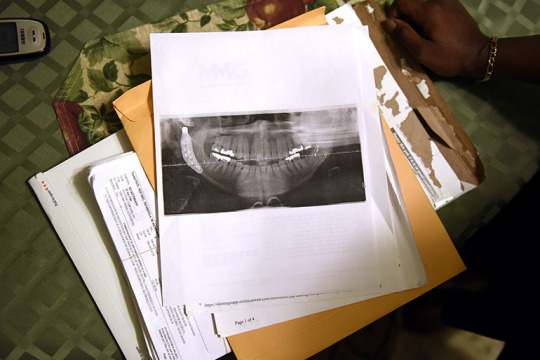
One woman who agreed to go on the record, Sharissa Derricott, said that at the age of 21, a surgeon had to replace her deteriorated jaw joint. In addition to being diagnosed with degenerative disc disease and fibromyalgia, a chronic pain condition, her teeth were breaking apart in her mouth.
“It just feels like I’m being punished for basically being experimented on when I was a child,” Derricott told PBS. “I’d hate for a child to be put on Lupron, get to my age and go through the things I have been through.”
So often in the debate over drugs referred to as ‘puberty blockers’, advocates and critics alike neglect to mention that before these drugs were marketed to gender non-conforming children, it was women who suffered, and continue to suffer, from their intense side effects. These women are the canaries in the coal mine, whose voices are continuously sidelined and ignored, despite the impact on their health so closely mirroring the reports implicating loss of bone density in children who are given endrocrine disruptors as a purported ‘treatment’ for body dysmorphia.
There is no reason to turn a healthy child or adolescent into a perpetual patient, dependent for a lifetime on surgeries and wrong-sex hormones. We ignore the harms inflicted on women’s health by leading ‘puberty-blocker’ Lupron at our own peril. These women, Keira Bell, and all detransitioners deserve better. Children ought to be protected from those who seek to exploit their distress for profit while damaging their health in the process.
5 notes
·
View notes
Photo

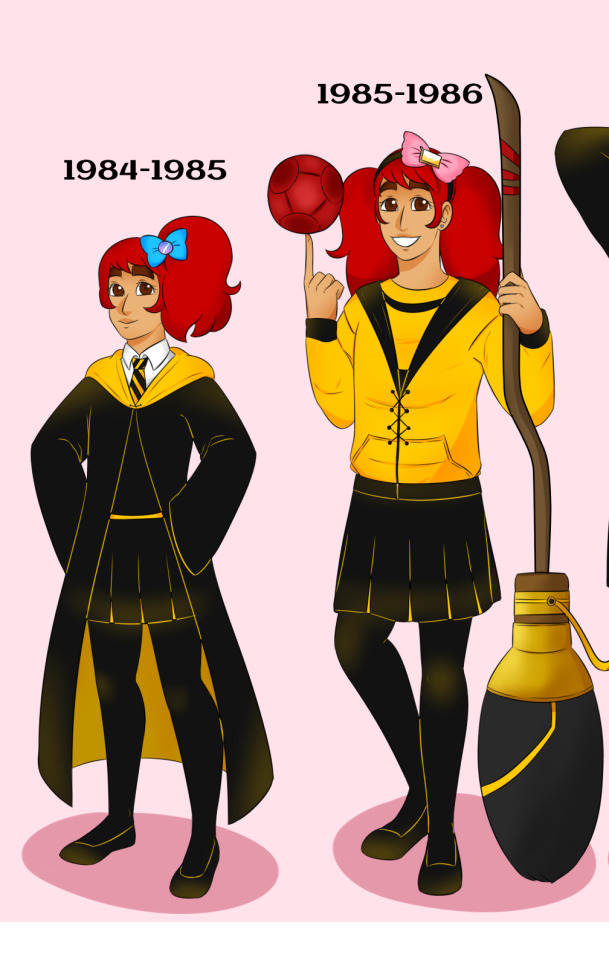


I lost track of how long this took me from start to finish but I’m very impressed with the final result. I can’t recall the last time I’ve drawn a line-up like this and actually finished it. That aside, Reina is meant to be very tall for her age, like at least a head taller than most kids her age, but here she looks to be of average height...XD
This is my take on the MC Through the Years Challenge (I think that’s what it’s called lol) by @leah-demarco
My contribution to the MC Childhood Challenge is right here! The stuff above can be regarded as a continuation from that.
Ties into the Future MC Challenge here!
(If the letters on my blog are difficult to read on the PC, use CRTL + to zoom in. When I tried increasing the font size on my settings, all it did was make the letters overlap horribly)
1984-1985 (11 years old)
After bonding with Ricardo (Jacob) over the past 3 years, Reina made up her mind to attend Hogwarts just for the sake of being closer to him. Since he never told her or her family about the vaults in order to keep them safe, Reina was completely expecting him to be at Hogwarts starting off his 6th Year. It wasn’t until after she met Rowan did she learn the truth. Upset and shocked as she was, that gave way to her absolute determination to find him and bring him home.
As Ricardo never mentioned having a sibling to anyone except Dumbledore and Chester, Reina was only ever seen as the friendly foreign transfer student from the Dominican Republic. She hit it off quite well with her fellow classmates, becoming popular in her own right, second to Penny. With dreams of owning her own bakery one day, she decided she would have a mini baking business while at school that became a hit with her classmates.
Much like Penny, Reina proved herself to be skilled enough at Potions to also be on Snape’s good side. She views brewing Potions in the same manner as she does baking, knowing the importance of having the right ingredients and the proper way to mix them. Despite enjoying such a positive atmosphere, it didn’t stop her from having to deal with Merula’s shenanigans.
Since Merula didn’t have the excuse of MC’s relation to their sibling to get away with messing with them, she often faced the consequences for her actions. The other students viewed her actions as quite malicious because as far as they knew, she was attacking the transfer student for no reason.
1985-1986 (12 years old)
With encouragement from Rowan, Reina tries out for the Hufflepuff Quidditch Team and becomes their newest Chaser. She also meets Andre around this time and the two bond over their love of Quidditch and how they were taught by their respective grandparents, Andre with his grandma and Reina with her grandpa.
Rowan effectively took Penny’s place for all the Quidditch stuff, as her own involvement stemmed from her family’s tree farm also making wood for brooms, and she wanted to see them in action. This helped Rowan break out of her shell, especially after hitting it off very well with Murphy.
Activities aside, Reina was still determined to get involved with the vaults for the sake of bringing Ricardo home. After meeting Bill for the first time, Reina unknowingly latched onto him due to seeing him as an honorary big brother figure. Once the Ice Knight had been dealt with and the Ice Curse broken, Reina would be left in shock upon hearing what she thought was Ricardo’s voice for the first time in 2 years. He begged her to not press further for her safety, but she wasn’t having it, promising him she’d rescue him from wherever he was.
1986-1987 (13 years old)
Develops a big time crush on Talbott after meeting him in group study sessions, and goes out of her way to help him when realizing he’s going through something. Merula’s constant spying nearly destroyed the chances of Reina and Talbott becoming friends, but in the end they succeed and the two become quite close.
With the Vault of Fear causing Boggarts to run amok all over the school, Reina knew she’d run into one eventually. What often puzzled her was that she’s never encountered one before, and isn’t exactly sure what her fears are. She got her answer when walking down a hall on the way back from the courtyard. It would take the form of a woman she wasn’t familiar with, but insisted she was Reina’s mother. The sight alone caused Reina to collapse with a high fever.
While she already knew her mother was abusive, the woman died when Reina was a toddler and her memories of the woman were wiped to spare her from the trauma. As the Boggart couldn’t figure out what Reina feared at the moment, it appears to have latched onto her subconscious. While she wasn’t sure why her mother’s image would cause her to have a fever, it gave Reina and her friends all the more incentive to break the curse as soon as possible. In time, of course, they succeeded.
1987-1988 (14 years old)
Reina pays less and less attention to Merula’s nonsense, and goes as far as befriending Ismelda after helping her deal with heartbreak regarding her feelings over Barnaby. Reina then attends the Celestial Ball with both Ismelda and Rowan as a girl group.
Some time after the Celestial Ball, she starts dating Talbott and the two are head over heels for one another. They do keep it private, however, as Reina herself is still very popular second to Penny, and Talbott would rather not be the center of attention.
After meeting up with Torvus, she befriends the Centaur much faster thanks to him not knowing of her relation to Ricardo. She has some familiarity with Centaurs as a herd of predominantly female ones live a short distance outside of her hometown. Progress is made and the Sleepwalking Curse is broken.
1988-1989 (15 years old)
Her 5th year proved to be a major turning point in Reina’s life. With newfound responsibilities, she now had to balance Prefect duties, her side baking business, Quidditch, detention and figuring out how to solve the newest curse. Reina’s emotion-reading abilities allowed her to be aware of Rakepick’s wickedness, and she refused to go anywhere near the woman to the point of avoiding her classes entirely. This didn’t go unnoticed by her friends.
The group found themselves divided over Reina’s choice to avoid the woman. Some of them (including Ben, Rowan, Talbott and Tulip) sided with Reina when she shared her concerns, while the others (Bill, Charlie and Penny) had doubts. Bill felt very appreciative of not only Rakepick teaching them actual important things, but the fact that she’d secure a Curse-Breaking job for him once he graduated. Charlie, of course, sided with his brother, and Penny herself was desperate for whatever help was possible to free Beatrice from the curse.
When questioned if her current levels of stress was affecting her ability to read the emotions of others, Reina couldn’t provide an answer, but stuck by her gut instincts regardless. Things reached a breaking point near the Christmas holidays. Penny (with some manipulation by an opportunistic Merula), took Reina’s refusal to cooperate with Rakepick in the worst possible way and angrily lashed out at her friend. The ensuing argument led to a vicious falling-out between the two. Some weeks later Reina would suffer a stress-induced mental breakdown that left her bedridden for some time.
Prefect duties were given to Rowan with Sprout’s approval, she was excused from detention and couldn’t take part in Quidditch until further notice. Her condition also prevented her from having her Quinceañera, which deeply upset her for quite a while. When Merula failed to get the painting from Peeves, Reina had to do it for her despite her weakened state. She recovers enough that she’s approved to enter the vault with the rest of the group.
After Rakepick revealed her true colors and went as far as trying to kill Reina, the group fights back and forces the woman to flee. She reunites with Ricardo and the two have a heartfelt reunion. He joins the group in heading back to school. While Reina would fall into a coma for a week (even clinically dying for 4 minutes), she would eventually recover. With Ricardo safe and sound, and the Portrait Curse being broken, Reina made it clear she would no longer be involved with the vaults. The injury she sustained from Rakepick would leave Reina in a wheelchair for most of the upcoming summer.
1989-1990 (16 years old)
After the emotional fallout from everything she went through the previous year, Reina fell into a very deep depression. It was so bad that it darkened her hair and left her in a lethargic state. She barely interacted with anyone outside of her family, Rowan and Talbott. She only took 4 classes (Potions, Transfiguration, Charms and Herbology) at the N.E.W.T. level as her future career of running her own bakery didn’t have any required classes to go with it.
She had no energy for her extra-curricular duties, so Rowan officially replaced her as Prefect. Reina had also stepped down from Quidditch for the same reasons, and ceased her baking side business as well. In her downtime she’d often be sleeping due to her near endless exhaustion. She even found a way to switch off her Empathetic abilities and kept them off due to not caring. With Ricardo tackling the final vault, Reina stayed true to her word by not getting involved when the next curse broke out.
She would remain in her slump until one night when she had a nightmare of Rowan getting killed right in front of her by Rakepick. It scared Reina so badly that it took a Calming Draught for her to be able to relax. While it didn’t break her out of her depression right then and there, it proved to be the push she needed to eventually make a recovery and get her inner fire back. What definitely added to it was how prophetic it felt. The same night she had the nightmare was when Ben and Merula went to the Forbidden Forest by themselves and encountered Rakepick, but were saved at the last minute by Ricardo.
Reina and her friends outright believe that despite the teachers’ best efforts to tackle the current curse, they weren’t getting anything done. The group would take matters into their own hands, but Ricardo would act as their guide, using his own experiences to help them out.
1990-1991 (17 years old)
By this point there’s no sure way of knowing how the vaults would be dealt with, but they would be dealt with. Reina by that point would feel a sense of relief that she could finally put the vault stuff behind her and go back to as normal of a life as possible. She’d graduate with the rest of her friends and together take the next step toward the new stage of their lives.
After graduating, Reina would head back to her home country and work under her family to learn how to officially run her own bakery.
#my art#avi ocs#hphm#hphm reina#reina cortez oc#mc through the years challenge#hogwarts mystery#i love how her plaid shirt turned out#there's like 56 layers total#please don't let this be a miss lol#i meant it when i said i lost track of time working on this LMAO
47 notes
·
View notes
Text
Xylitol Research and Evidence
Xylitol is a non-sugar sweetener extracted from the birch tree. It is a five-carbon polyol that has effectively demonstrated itself to be cariogenic, by its action of neutralizing plaque acidity on teeth and repairing tooth enamel. Hence, it is also called the “magic bullet.”
The major production of xylitol goes to the pharmaceutical and oral hygiene industries and to confectionary manufacturers. It has 30% less calories compared to table sugar (calorific value of xylitol is 2.4 kcal/g, while that of sugar is 4 kcal/g) and is used in different food products for children like chewing gum, candies, gelatin, and in lozenges, toothpaste, and mouth rinses.
Xylitol and Dental Caries
Clinical trials on xylitol show that it plays a major role in prevention of dental caries in babies and teenaged children and in the fetus through the mother. Use of xylitol chewing gum is directly related to reduction of dental caries. Moreover, xylitol also reduces the s. mutans transmission from mother to infant.
Another research on children has found that xylitol candy, pops, ice, gums, puddings, and cookie help in arresting dental caries. Follow-up studies five years later showed that xylitol gum resulted in reduction of caries by 59% against no gum use.
Trials conducted in Finland, a major producer of xylitol, proved that children of xylitol-treated mothers’ had lower levels of s. mutans than those treated with fluoride varnish or chlorhexidine.
Other Impacts of Xylitol
Accumulation of excessive xylitol in the intestine leads to retention of water, which results in diarrhea. Consumption of excessive volumes of xylitol can lead to side effects such as gas and bloating. Xylitol which remains unabsorbed is eliminated after being broken into carbon dioxide. A report published by the European Union’s Scientific Committee on Food in 1985 stated that consuming 50 g of xylitol per day can lead to diarrhea. The Committee also affirmed that tabletop sweeteners that contain xylitol must be highlighted with a warning saying: “Too much of consumption may lead to laxative effects.”
The impact of xylitol is much less on the blood sugar levels compared with natural sugar, because of the gradual absorption rate of xylitol. This fact was approved in a xylitol review by the European Food Safety Authority (EFSA). This indicates that xylitol could help people with disrupted tolerance of glucose, a leading risk factor for cardiovascular disease and diabetes.
Health benefits and risks of chocolate
Chocolate is made from tropical Theobroma cacao tree seeds. Its earliest use dates back to the Olmec civilization in Mesoamerica.
After the European discovery of the Americas, chocolate became very popular in the wider world, and its demand exploded.
Chocolate has since become a popular food product that millions enjoy every day, thanks to its unique, rich, and sweet taste.
Fast facts on chocolate
Chocolate consumption has long been associated with conditions such as diabetes, coronary heart disease, and hypertension.
Chocolate is believed to contain high levels of antioxidants.
Some studies have suggested chocolate could lower cholesterol levels and prevent memory decline.
Chocolate contains a large number of calories.
People who are seeking to lose or maintain weight should eat chocolate only in moderation.
History of Candy
Candy is made by dissolving sugar in water or milk to form syrup. The final texture of candy depends on the different levels of temperatures and sugar concentrations. Hot temperatures make hard candy, medium heat make soft candy and cool temperatures make chewy candy. The English word ''candy'' is in use since the late 13th century and it derives from Arabic qandi, meaning ''made of sugar''.
Honey has been a favorite sweet treat throughout recorded history and is even mentioned in the Bible. The ancient Egyptians, Arabs and Chinese candied fruits and nuts in honey which was an early form of candy. One of the oldest hard candies is barley sugar which was made with barley grains. The Mayans and the Aztecs both prized the cocoa bean, and they were the first to drink chocolate. In 1519, Spanish explorers in Mexico discovered the cacao tree, and brought it to Europe. People in England and in America ate boiled sugar candy in the 17th century.
Sour candy trends
Sour candy has captured the attention and taste buds of consumers who look for confectionery experiences outside of the standard of sweet, says Steve Schuster, president of Wisconsin-based Schuster Products, which makes a line of sour products called Face Twisters.
“It is extreme, and people like to push their sensation of taste,” he said. “They are now accustomed to this taste sensation and seek it because it moves beyond the norm.”
Jenny Doan, director of marketing for Warheads maker Impact Confections, agreed. She pointed to consumers’ palates becoming increasingly daring, especially as consumers experience more global cuisine.
“Globalization has exposed consumers to more sour foods across many categories — examples include Greek yogurt, fermented Korean kimchi, Chinese sour plums, etc.” she said. “Also food preparation techniques such as fermentation and pickling are gaining in popularity and spurring development for more sour foods and beverages.”
And the products in development come from several confectionery categories, including chewing gum, hard candy and chewy candy. Chewy candy also has experienced steady growth over the last few years. IRI, a Chicago-based research firm, reported the $3.73 billion non-chocolate chewy category grew by 3 percent in the year ending Feb. 24, 2019.
Of the Top 20 non-chocolate chewy candy brands IRI tracks, a quarter of them are positioned as sour candy, and at least another quarter have sour line extensions. Mondelez International’s Sour Patch Kids pulled in just over $197 million in the reporting period, while Trolli Sour Brite Crawlers generated $133.6 million.
The Untold Truth Of Gummy Bears
There are the people who love to munch on chocolate bars, from Butterfingers to Snickers, indulging in the perfect combination of sweet and salty. And then there are the candy lovers who are obsessed with anything chewy, gooey, and gummy. Gummy candies only seem to be rising in popularity, and really, there's a gummy candy in pretty much every shape out there at this point.
But despite the introduction of gummy candies like frogs, butterflies, and even mini soda bottles, gummy bears will forever be one of the most iconic gummy candies we turn to.
But what's the story behind these little gummy bears? How did they get their start, and what's in them that makes them so perfectly chewy? They're a ridiculously satisfying sweet when you're trying to curb a craving, but as it turns out, there's a lot more to their story than meets the eye. We decided to grab a handful and dig a little deeper. This is the untold truth of gummy bears.
The History of Lollipop Candy
The first incarnation of the lollipop candy was probably created by cave people thousands of years ago who collected honey from beehives with a stick. Not wanting to waste the sweet nectar, they most likely licked the stick, thus inventing the world’s first lollipop. Good for them (good for us). Archaeologists believe that ancient Chinese, Arabs, and Egyptians all produced fruit and nut confections that they "candied" in honey, which serves as a preservative, and inserted sticks into to make easier to eat.If the 17th Century English version doesn’t count as the first modern lollipop, you could look to the Civil War era for another early forerunner, when hard candy was put on the tips of pencils for children. The early 20th Century was the era of automation, which is when the birth of the lollipop as we now know it begins in earnest, but there are still discrepancies as to who is the true creator.
What Is Chewing Gum?
Chewing gum is a soft, rubbery substance that’s designed to be chewed but not swallowed.
Recipes can vary between brands, but all chewing gums have the following basic ingredients:
Gum: The non-digestible, rubbery base used to give gum its chewy quality.
Resin: Usually added to strengthen gum and hold it together.
Fillers: Fillers, such as calcium carbonate or talc, are used to give gum texture.
Preservatives: These are added to extend shelf life. The most popular choice is an organic compound called butylated hydroxytoluene (BHT).
Softeners: These are used to retain moisture and prevent the gum from hardening. They can include waxes like paraffin or vegetable oils.
Sweeteners: Popular ones include cane sugar, beet sugar and corn syrup. Sugar-free gums use sugar alcohols like xylitol or artificial sweeteners like aspartame.
Flavorings: Added to give a desired flavor. They can be natural or synthetic.
Candy
candy, also called confectionery, sweet food product, the main constituent of which generally is sugar. The application of the terms candy and confectionery varies among English-speaking countries. In the United States candy refers to both chocolate products and sugar-based confections; elsewhere “chocolate confectionery” refers to chocolates, “sugar confectionery” to the various sugar-based products, and “flour confectionery” to products such as cakes and pastries. This article is primarily concerned with sugar confectionery. Other types of confections are discussed in the articles baking and cocoa.
1 note
·
View note
Text
Ladyhawke: Facets of Filmmaking
Thankfully, unlike The Wizard of Oz, Ladyhawke’s production turned out to be much less of a…..production.
With only one director on the scene, a handful of talented actors and some great locations, Ladyhawke’s behind-the-scenes story is far less dramatic than other fantasy films before it, no doubt much to everyone’s relief. That doesn’t mean there isn’t anything interesting to look at, though.
Today’s article isn’t answering a question, or discussing any of the themes of the film itself, instead, we’re going to be taking a look behind-the-scenes to learn a few facts about the film, and discover how we got the final product.
Originally pitched in 1981, Lauren Shuler, the producer of the film, fought to make Ladyhawke a possibility for four years. Thanks to the difficult casting, set building, location work and battles with the studio, the project ended up taking far more time than it should have, but in the end, it did get made, and turned out a decent product. What we’re looking at today is how that happened.
For starters, before you start making a movie, you had to find somewhere to make it. Let’s talk about location-hunting.
By the time he did Ladyhawke, director Richard Donner had already been involved in other, well-done films, including the first two Superman films, and had been directing since 1960. In other words, this movie business was old hat. The man knew how to find a location, and started his search for the fantasy setting overseas, in Czechoslovakia. Donner, knowing that he wanted an ‘authentic’ medieval look and feel for his film, found several locations that he felt would be perfect, but there was one small problem:
In the mid-80s, Czechoslovakia was under the control of the Soviet Union.
So he turned elsewhere, this time settling on another location that would have been far less difficult to work with: Italy.
After a short time checking out other countries, including Spain, production settled in the Italian countryside for filming. Donner approved of the landscaping so much, he personally joined the scouting team, driving around for two full months, finding every location used in the movie in only a handful of weeks. Even with the few bumps in the road ahead (such as not being permitted to film inside the real medieval churches, having to spend two months constructing sets instead), Donner had found the perfect spots for his fairy-tale.

In fact, Richard Donner was so enthusiastic about the locations, he even tried to find a way to put it in the soundtrack. From the beginning of the setting search, he had one person in mind for the soundtrack: The Alan Parsons project people, Andrew Powell and Alan Parsons. The composers claimed to draw inspiration from, among other things, the landscape itself, attempting to put what they saw into the soundtrack. Whether they succeeded is very much a matter of opinion.
Once they had somewhere to film, however, what came next was casting.
Originally, the cast for Ladyhawke looked considerably different than what we got. Rutger Hauer was an original choice, but instead of being cast as Navarre, Hauer was originally wanted as a villainous character. (This would have fit in with his traditional bad-guy roles.) Wanting to avoid typecasting, Hauer told Donner that he liked the script, but didn’t want to play the villain, telling him to call back if he needed someone for Navarre.
Currently filling the role of Navarre was none other than Kurt Russell. Russell dropped out just before filming was to begin, leaving the film without a hero. Hauer was given the part of Navarre instead, probably a better choice for the understated, serious knight, and filming began with Hauer in one of his only main roles. On top of pure acting ability, Hauer had also been swordfighting and horseback riding since his teens, and was skilled enough to credibly pull off the physical aspects of the part. Once cast, Hauer drove his eighteen-wheel mobile home from his home in the Netherlands to the location in Italy, creating quite a stir.

There were other parts to cast, however. Some of the original choices for the original parts were actually quite surprising; Mick Jagger was considered for the Bishop of Aquila and Sean Connery was originally a possible choice for the villainous captain of the guard, Marquet. In the end, the roles went to John Wood and Ken Hutchinson, respectively.
But that still left the protagonist uncast.
Matthew Broderick, recently coming off of hit film Wargames (In which he also starred with John Wood), was not the first choice for the main role of Phillipe Gaston. Instead, Dustin Hoffman was in the consideration, being a huge star-power factor. On the other hand, Hoffman had been in the film business for over twenty years already, and was older than Rutger Hauer. Richard Donner decided that he wanted Gaston to be a younger character, and their attention turned to Sean Penn, who was considerably newer to the movies. In the end, Penn turned the role down, and the part went to Broderick, who was twenty two at the time of the film’s release.
That still leaves the titular Ladyhawke.
Michelle Pfieffer originally approached the role of Isabeau with caution, stating that she didn’t want to play a ‘beautiful princess romping through the woods’ character. After she read the script, she decided that she liked it, and sent in an audition tape where she read lines with a friend of hers, the then-unknown Kevin Costner.

Also on her audition tape was a decidedly humorous twist: Pfieffer, without an actual hawk, turned her camera on a little bird, providing a voice-over from off-screen. Donner, liking both her performance and sense of humor, cast her as Isabeau.
With casting finished, all that was left to do was actually film this thing.
Ladyhawke was physically hard on the actors, notably Hauer and Broderick. While filming the climactic church fight scene, Rutger Hauer lost twenty pounds, thanks to the heavy costume and sword action.
Matthew Broderick, however, possibly got the shorter end of the physical discomfort deal.
During the beginning escape scene from the prison, the script requires Broderick’s character to swim through the sewers to shore, emerging from the water and running away into the countryside. Unfortunately, this took two hours to complete, during which Broderick had to ‘burst’ from the water repeatedly, spending a lot of time deep in frigid water. Once this scene had finished, he had to then film scenes running through wintry landscapes, still dripping wet. Needless to say, he spent quite a bit of time wet and cold, but it wasn’t all bad. Richard Donner, a caring director, had the production team put together a wet suit and some insulation for Broderick to wear underneath his costume during shots that didn’t require close-ups.

The problems didn’t exactly end there. Matthew Broderick, a young American actor, struggled with a European accent that is noticeably odd in the final project, and also had no experience with horses. This unfortunately led to an incident during which the horse Broderick was seated upon took off at high speed, prompted by a smack from Hauer. Members of the production crew set off in jeeps, and discovered Broderick and the horse half a mile away.
Despite casting difficulties, location setbacks and other problems, Ladyhawke was released on April 12th of 1985 with a budget of 20 million dollars and a box office of $18.43 million. In the end, the film was mostly forgotten, finding second life later on VHS and DVD. An unknown classic fairy-tale story, it is fondly regarded by the devoted gathering it’s accumulated in the years since its release. Overall, it remains a unique cult classic, likely to remain beloved by dedicated fans for years to come.
We’re almost finished with our study on Ladyhawke! Join us next week for our final thoughts, and don’t forget the ask box is always open. Thanks so much for reading, and I hope to see you in the next article!
#Ladyhawke#Ladyhawke 1985#1985#80s#Film#Movies#Fantasy#Adventure#PG-13#Rutger Hauer#Michelle Pfeiffer#Matthew Broderick#John Wood#Leo McKern#Richard Donner
13 notes
·
View notes
Text
december 18, 1985
If you want to destroy my sweater, hold this thread as I walk away. Watch me unravel, I’ll soon be naked lying on the floor; I’ve come undone. - Wheezer, 1994
day 1
day 2
[ day 3: wow, that is an ugly sweater ]
Will sits on the steps outside the Wheeler household, a steaming mug of hot chocolate scalding his ungloved hands. The sharp heat is a welcome comfort against the whipping wind lashing snow against his face. He takes a hand from the cup and wipes it across his flushed and damp cheeks. The door behind him creaks open but he doesn’t bother to turn and give his sudden intruder his attention. He can tell from the person’s gait as they take a few steps from the door that it’s El anyway.
“Hi, Will,” she starts ever so kindly. Will gives her a hum of acknowledgement and scoots over as she squeezes in on the step next to him. He notes that she’s wearing a too-large green sweater, but it’s oddly familiar so he assumes it must be one Mike outgrew after his growth spurt. “It’s cold outside.”
“Yeah,” Will replies softly. The mug rim dances against his lips as heat from the liquid curls up his nose. “Why’d you follow me out here?”
“Me and Mike finished talking.” Will wants to correct her—Mike and I—but he just nods. “I’m happy for you; I hope you know that.”
He wants to say yes because deep down, he knows all El has ever wanted from him since they moment they met in the Upside Down is his happiness and safety. She trusts that Mike can give him both, which is part of the reason why she so excited approves whatever happens between them. Everyone knows Mike and El adore each other, and maybe there will always be a tiny part of Will inside that’s forever cold and bitter over El getting Mike first when it comes to romantic entanglements. At least until he grows out of it once he’s more comfortable about being with Mike. It’s still a weird thing, looking across the way and knowing that when Mike glances up and catches his gaze, the soft look in his eyes is meant for Will in that special way Will himself didn’t truly realize he wanted until he saw that gaze directed at El during Snowball the year before.
He wants to say yes because El really is happy and he knows that intellectually, factually, and objectively. She speaks the truth and yet a minuscule subsection of Will’s hardened heart still believes the words are nothing but a farce hiding disgust and disappointment.
Of course she’s happy, he thinks with a voice laced in self-deprecation and harrowing pity, happy she’s not dating a guy who likes guys. Happy she’s not kissing a boy who would rather kiss other boys.
And he knows it’s stupid thoughts because El really doesn’t care about things like boys liking boys and girls liking girls. Plus, he’s extrapolating a lot of his own internalized problems and fears onto Mike and that’s unfair too but he can’t help it. He has no clue what goes on in Mike’s head when it comes to what they are and he’s scared that Mike will run away once the reality of it all comes crashing down. It’s not as if Will is too sure he wouldn’t run away either; he’s never been with anyone before, he’s never had the freedom to express his affections for Mike in this manner, and the ability to do so freezes him in a stupor every time Mike brushes their hands together or how all day on this cold winter Wednesday, Mike sent Will gentle and warm smiles that screamed “I’m glad I’m with you”.
Despite not having her powers back, El seems to have the innate ability to read Will like a book. She tugs on his sweater and then tries to pull the mug out his hands when he can’t gather his thoughts from the swirling depths found in dark, bleak shadows hidden from the light of the moon. “Will,” she whispers kindly. “It’s okay.”
What exactly is okay about all of this? Will feels like he’s unraveling at the edges, unsure if this new relationship is really something he should be pursuing. “How do you do it?” he asks weakly, hating his voice for cracking.
El huffs out a short breath and Will watches her breath puff white in the night air. “Do what?”
Care for someone. Present that affection. Love Mike Wheeler. It feels so all consuming and Will can’t understand how he’s able to carry this much feeling for one person and be allowed to express it, act on it, enjoy it. It’s as if a dam inside him has smashed open, waves of besotted sentiment crashing into every thought until he’s drowning, one hand reaching out through the ocean in his heart only for nothing to reach out and save him from himself. He closes his eyes and lets the winter breeze brush calming fingers through his lightly tousled hair.
“Wear such an ugly sweater like that,” is what he says, nodding toward El as he tugs at the green cloth on her shoulders. Now that he looks at it, it’s definitely Mike’s—an old thing he got from his grandma a few Christmases ago. It’s decorated with battery operated Christmas lights and cotton puffs meant to imitate snow. Rudolph the Red Nose Reindeer decorates the center with a glowing nose and Will remembers Mike tolerating the sweater just for the reindeer. A green, red, and white chevron pattern lines the edges and seams, and all in all, the sweater is far too decorated but it swells over El’s entire body and consumes her in a way it never did Mike.
Will finds it suits her in an endearing way.
El though seems to catch Will’s deflection but she doesn’t question it further. “It feels weird at first,” and maybe El is actually answering his unspoken question, “but you get used to it. Other people might say it’s ugly and complain that you wear it around but,” and she taps the flashing red nose which lines up over her heart, “I like it. I think you should be proud to have a gift like that. Not everyone gets to wear ugly sweaters for Christmas.”
Will drinks from his mug to hide his smile, nose crinkling once he realizes the drink has now gotten too cold for enjoyment. The door behind them opens and Will turns to spot their undisclosed topic of discussion working his way down the steps to them. “Hey,” he starts, ruffling Will’s hair as he squeezes El’s shoulder. He settles down on Will’s other side and snags the mug from his hands only to also scowl once he realizes the drink inside is cold. “You want me to warm this up for you?”
They hold eye contact for a moment, something silent and unspeakable passing between them in just a second or two. Will smiles and places his hand over Mike’s significantly warmer one. “Sure, if you don’t mind.”
El stands up and plucks the mug from Mike’s hands with a giggle. “I can do it, don’t worry about it.” She’s gone before either boy can protest and Will stares at his hands as silence fills the air.
Mike sits a little closer after a moment and places his hand on Will’s thigh with a small squeeze. “Was I too much today?”
“Too much?”
“Like with the glances and touches and stuff? I can stop if you want, it’s just...,” the lanky boy laughs and rubs at the back of his neck. “I don’t know.”
“I don’t mind really.” Will states and he doesn’t mind, not truly even if he’s still unable to really respond with anything more than stiff nods or quickly averted glances. “Don’t stress over it.”
“Take your own advice, yeah?” Mike nudges Will’s shoulder and lets loose a gentle sigh. “This is all so new, you know? I don’t know what to do.”
Will shakes his head. “Then why are you asking me? At least you’ve had a relationship before this.”
“Yeah, but you’re...well, you’re you.” Mike’s blushing, his freckles spotted against his reddening cheeks. Will feels an underlying urge to kiss each one he can see. “I don’t want to mess this up. Like you said yesterday, this is serious.”
“We’re serious?”
“Of course.”
The wind blows a bit stronger and Will closes his eyes against the incoming breeze filled with melting flakes. Mike curls in closer, not dressed for the winter weather even less than Will. The brunette unravels his scarf and wraps it around his companion’s shoulders, letting his hands linger just a moment longer than he usually would now that he has the permission to do so. They’re far too close to each other for public consumption and if it weren’t dark and snowy outside, Will wouldn’t dare be this close to him in case someone drives by and decides they need to comment in a more physical sense.
Will speaks up to distract his thoughts from taking a twist. “I saw you gave El your sweater.”
Mike laughs, hearty and sweet in the way Will has always loved. “She wanted it and you know I can’t fit it anymore. I don’t miss it, I mean, it’s so ugly anyway.”
“Yeah. That is an ugly sweater.”
Soft lips press against his temple and Will leans into the touch, letting the heat melt the chill that built up during his hiatus outside. Will feels more than hears Mike’s next words. “Bet it’d look cute on you.”
He smiles, no reply on his tongue, but he closes his eyes and doesn’t stress over it as Mike requested. How can he anyway when he’s got the cutest boy wrapped around him making sure his winter night ends in nothing more than love and comfort.
68 notes
·
View notes
Text
The next to last MOVE

[The release of Delbert Africa after 42 years in prison has lit me up like fireworks. Most of what's below was written several years ago, so this is a minor update. But goddamn am I glad he's out. It doesn't put the end to anything – one other MOVE member is still languishing – but it lends the closing bracket on a time and place that's long, long been central to my life. I never talked to Delbert, but I was never less than monumentally impressed by him, even though I thought MOVE was basically off its nut. See what you think.]
In the summer of 1978, my wife Linda and I had fun towing her little red wagon full of rocks through the police line during the first confrontation between the city of Philadelphia and MOVE.
Never heard of MOVE, or only recently with an odd revival of interest? I'm not surprised. Only in Philadelphia could the record of summer-long martial law effectively... vanish for decades.
Back then, MOVE was often called a "back to nature" and/or "anti-technology" outfit: A back-to-nature-anti-technology outfit that used bullhorns, lived in the middle of a city of 1.5 million inhabitants and organized protests of Jane Fonda and Buckminster Fuller. Demonstrating against the then-82-year-old champion of the geodesic dome – who would do such a thing, why?
Only MOVE, only in our itty-bitty liberal enclave of Powelton Village, and I think no one will ever know exactly why. They followed the teachings of Vincent Leaphart, whose rambling treatise made little sense to anyone beyond his small band of raucous believers. "MOVE" wasn't an acronym, just a word, but always capitalized. Leaphart changed his name to John Africa and insisted his followers all take the last name of Africa.
Powelton, a ten-square-block Victorian snippet of West Philadelphia north of Drexel University and the University of Pennsylvania, began as the city nabobs' summer-retreat in the late 19th century, just across the Schuylkill River from Center City. By the late 1960s it had attracted a loose rattle of quiet leftists and inoffensive layabouts who were tolerant of most anybody but Drexel, which was determined to devour as much of the community as it could ladle down (and has now debased the area with overpriced apartments for its students.)
During the late '70s, Powelton's squishy acceptance allowed MOVE to occupy a pair of brick twins at 33rd and Pearl Sts., no more than a block from our commune, where they nailed together huge, ramshackle ramparts, kept a pack of half-feral dogs, ate raw meat and tossed their garbage in the yard. An all-black group (except for one scrawny white woman), they were dreadlocked and more physically fit than any health poster.
For income, they washed cars on 33rd St. (and did a damned fine job of it). On no particular provocation, they would mount the ramparts, pick up a bullhorn and harangue the world. It made a hell of a racket. They could also explode into sudden violence, especially against the police, though I regularly walked past their house and was never harassed.
The city, citing housing and sanitation regulations, declared them pests and obtained a court order telling them they had to go. The order set off one of the strangest confrontations in modern American history.
On a quiet summer evening, the MOVErs mounted the ramparts carrying rifles and dressed in camo fatigues. You'd think the police would act. Well, they did: They blocked traffic on 33rd St. That was it. They never approached the MOVE house. During the protest, Delbert Africa, their chief spokesman (one of the most beautiful human beings who ever existed) issued this statement, part haiku, part tautology, that has always defined MOVE for me:
"Any motherfucker
tries to take away my motherfuckin' rights,
that man is a motherfucker."
I doubt their guns were loaded (they have since claimed they were not). For one thing, they were pointed straight up, for show. For another, the fatigues still had folds in them – the protestors had bought them that afternoon, probably at I. Goldberg's, a decades-old army-navy surplus store.
The city's mayor was Frank Rizzo, former police commissioner from South Philly, idolized by the Italian community, hated by the gays and blacks he had hounded throughout a career of sneering, swaggering machismo (my favorite quote: "I'll make Attila the Hun look like a faggot").
Rizzo's response to MOVE was incomprehensible and ultimately ruinous for the city. Rather than clear the house of this rabble on outstanding charges of health and safety violations, he directed the police department to place a cordon around our neighborhood and wait for MOVE to capitulate. (If China had suggested starving out a bunch of dissidents, the U.S. would have been mightily upset.) Worse, he announced his plans a couple weeks in advance, giving MOVE's supporters ample time to haul in truckloads of supplies, including a skid of dog food.
For the next roughly six weeks, Powelton was occupied by up to 2,000 police and support personnel. I still find it hard to grasp that a judge blithely approved a state of martial law to enforce health regulations. And that his ruling was never seriously challenged or overturned.
To those familiar with MOVE, the result was foreordained—they simply hunkered down and refused to... move. Us Poweltonians, meanwhile, had to show identification to enter our own streets. The local activists, in their vocal but placid way, formed so many committees to discuss the situation – roughly equal pro- and anti-MOVE – that a higher committee coalesced to coordinate them all.
About then, Linda was moving back to the commune where I'd met her and where I still lived. We had no "transportation" beyond a battered wire shopping cart and her little red wagon. Back and forth we clumped from her apartment, the wagon loaded with books, kitchen equipment and the big garden rocks she'd brought from her home in Kansas. After awhile, even the cops found it ridiculous to keep asking for our IDs. They'd grin lightly, look bemused, then stand aside.
The immense police presence was absurdly ineffective. They exempted the street behind us from the cordon, and since our block had no internal fences, I would walk Pearl, our exuberant St. Bernard, down our front steps and half way around the block, then in the back way, without a single police challenge. The neighborhood also experienced a marked increase in breaking and entering – I guess it heightened the crooks' street cred to thumb their noses at the Man.
Across the city, the police force was in a shambles from diverting 20% of its resources to a pointless, static operation. (Once the blockade was lifted, they found that MOVE had moled a tunnel through to Powelton Ave., sneaking in supplies during the entire occupation.)
As I hazily recall it, the city and MOVE reached an agreement that if the police lifted their blockade, MOVE would hand over their guns. The police lifted the blockade, and –surprise! – MOVE handed them a bellylaugh.
Then one morning Linda and I were awakened by a short, intense rattle of gunfire. It hit like a mallet: "My god, they're killing them all." As it turned out, one police officer, James Ramp, was killed but no MOVE members. Despite conflicting forensic evidence on where the shot had come from, nine MOVErs were convicted of third-degree murder and for decades were regularly denied parole.
When I returned from work that afternoon, the street in front of our house was scored with caterpillar treads. I followed them around the corner to 33rd St. The MOVE houses were gone – three-story brick Victorian twins evaporated, the ground a smooth expanse of Philadelphia's yellow-brown clay. As Linda's young son Ben said, "At least they didn't salt the earth."
The occupation and confrontation were big news in city media back then, but they never caught national attention. Why? Can you name another example of weeks-long, uncontested martial law in a major American city?
That wrapped up MOVE for Powelton, but not for the city. Seven years later, on May 12-13, 1985, under Mayor W. Wilson Goode, the local government again lost its ability to think like adults in response to MOVE. The remaining group had moved to Osage Ave. on the city's western edge and again erected ramparts, but the local population was less willing than the loosey-goosey Poweltonians to accept such disruption.
This time, the city cut corners and turned to direct confrontation. The result was an armed standoff that ended when a collective of official imbeciles OKd dropping a parcel of C4 explosive onto MOVE's roof bunker. As the resulting fire spread, rather than endanger the firemen standing ready (or so read the official rationale), it was left to go its merry way.
The entire square block of over 60 rowhouses burned flat. When the smoke had cleared and the flames died out, 11 members of MOVE were found incinerated, including John Africa and five children. There were only two known survivors, Ramona Africa and nine-year-old Birdie Africa, who was permanently disfigured.
A footnote: Ramona, along with Birdie's relatives, were paid millions in damages. Ramona bought a house in the city's Kingsessing neighborhood, where she and MOVE remnants live a relatively quiet life. After hemming and hawing, the city agreed to rebuild the houses destroyed through its asinine incompetence. As a monument to shoddy, graft-infested contracting, the replacement homes proved uninhabitable, the contractors faced criminal charges, and the bedraggled homeowners were once again evicted while their "new" homes were razed and replaced.

by Derek Davis
4 notes
·
View notes
Audio
Item #: SCP-1141
Object Class: Keter
Special Containment Procedures: All public zoos in Connecticut, Maine, Massachusetts, New Hampshire, Rhode Island, and Vermont are to be under constant surveillance by personnel at Site-85 and Site-86. Should SCP-1141 occur, the approximate nature and threat level of SCP-1141-1 is to be ascertained as soon as possible, with the nearest branch of Mobile Task Force Gamma-80 (aka "Ecologists") deployed to the zoo in question with all equipment deemed necessary.
Upon arrival, MTF Gamma-80's task is to destroy SCP-1141-1 or render it inoperable as soon as possible. The use of force is authorized for this purpose. If SCP-1141-1 does not pose an immediate risk to the public, MTF Gamma-80 will purchase several food items and prevent all public access to SCP-1141-1. If this does not result in the disappearance of SCP-1141-1 within twenty-five minutes, Site Director Jackson is to be notified. Food items purchased from SCP-1141-1 are to be sent to Site-86 for further research and containment.
AMN-M-4311 is to be distributed through the zoo's public address systems, mass texting services, and all relevant social and news media after the disappearance of SCP-1141-1 and the departure of MTF Gamma-80 in order to prevent dissemination of information regarding SCP-1141 and related Foundation operations. Damage to zoo property and any casualties are to be attributed to fire, vandalism, or animal escape as deemed appropriate to the situation. Should Site-85's budget allow, an anonymous donation may be made to the affected zoo to cover costs of repairs.
As of ██/██/████, additional resources have been allocated to projects deemed capable of neutralizing SCP-1141, with all strictly relevant research under the purview of Dr. Edelmann.
Description: SCP-1141 is a phenomenon in which an instance of SCP-1141-1 instantaneously appears at a public zoo in the New England region of the United States. This occurs approximately thirty minutes prior to the opening time of the zoo in question. The infrastructure and nearby structures (such as utilities, enclosures, pathways, and other buildings) will be altered to accommodate SCP-1141-1's presence, as will maps of the zoo. SCP-1141 will only occur under the following conditions.
No instances of SCP-1141-1 are operational.
Less than 20% of the zoo's grounds are covered in snow.
The temperature has been above 15°C during operating hours for the past week.
At least 250 days have passed since the demanifestation of the most recent instance of SCP-1141-1.
Instances of SCP-1141-1 take the form of a fully staffed, supplied, and operational restaurant that is thematically consistent with other restaurants in the zoo and with the area of the zoo in which it is located. For example, an instance of SCP-1141 that manifested near a leopard enclosure was called "Leopard's Spot Snack Shack". Food served at SCP-1141-1 is consistent with food served at similar establishments, with the exception of each instance offering guacamole with pineapple chunks. Food and other supplies will appear as needed inside SCP-1141-1, out of view of the public. Staff of the zoo will not demonstrate any familiarity with SCP-1141-1.
All individuals staffing SCP-1141-1 are anatomically and behaviorally consistent human beings, and will run SCP-1141-1 to the best of their ability. These individuals are fluent in English and knowledgeable in the operation of SCP-1141-1. They are either unwilling or unable to answer personal questions (such as identity and personal history) or questions pertaining to the nature or origin of SCP-1141. They will not leave SCP-1141-1 willingly.
Instances of SCP-1141-1 have an unpredictable and often dangerous effect on their surroundings. The exact cause of this is not known with certainty; however, analysis has led several researchers to propose that instances of SCP-1141-1 do not necessarily operate under physical laws or constraints present in our dimension prior to their manifestation. See Event Log SCP-1141-1 for details.
If an instance of SCP-1141-1 is rendered inoperable or if its presence causes obvious injury to a person visible from SCP-1141-1, the instance will demanifest within the next twenty-five minutes, with all infrastructure, structures, and maps of the zoo returned to their previous condition. All food items sold by SCP-1141-1 will remain, and may continue to demonstrate anomalous properties.
Event Log SCP-1141-1
All locations and several manifestations have been removed from this document as per Level 2-Probationary Clearance protocols. This document will serve to illustrate the effects of SCP-1141 and should not be taken as a comprehensive list of SCP-1141 events.
Year: July 1985 Event: Accurate description of SCP-1141-1 could not be gained. Instance and all of its contents manifested at approximately 5000°C; despite this, it appeared to be fully functional and did not combust. The instance disappeared after its foundation crumbled, resulting in structural collapse. Fire caused by SCP-1141-1 destroyed several animal enclosures and injured four park employees before being extinguished.
Year: June 1990 Event: SCP-1141-1 manifested as the "Amazon Basin Café". While the building remained intact, SCP-1141-1 appeared to experience gravitational force approximately 2.3 times stronger than Earth's surface gravity. Two orders of french fries were procured prior to SCP-1141-1's disappearance due to an inability of its staff to serve customers. Testing indicated that this food had no greater mass than comparable french fries, yet weighed 2.3 times as much as their mass would indicate.
Year: June 1991 Event: SCP-1141-1 was entitled "A Grizzly Tale". The instance was found to be fully operational and not immediately dangerous. A variety of food items were purchased before SCP-1141-1's disappearance was induced by the placement of Foundation guards to prevent entry. Analysis of the food indicated that its de Broglie wavelength was approximately 1 cm, despite having a normal mass. The food has been designated as a separate anomalous item and is contained at Site-86.
Year: April 1992 Event: SCP-1141-1 was not detectable aside from alterations to infrastructure. Maps of the zoo marked a restaurant called "Safari Grill". The changes to the zoo's infrastructure reverted two hours after opening, presumably when it became apparent that none of the zoo's patrons were aware of SCP-1141-1. Later records indicate that relatively frequent repairs to structures near this area have been necessary since this manifestation.
Year: September 1994 Event: SCP-1141-1 manifested as "The Glacier Café". Reports and later analysis indicate that this instance of SCP-1141-1 was subject to drastically accelerated buildup of static electricity. SCP-1141-1 did not appear to be grounded; further, weather conditions at the time, including winds in excess of 50 kph, contributed to this problem. Seventeen individuals, not including the occupants of SCP-1141-1, were killed by static discharge before SCP-1141-1 disappeared.
Audio Log 1141-7
Conversation between two individuals occupying SCP-1141, recorded July 1978 via hidden microphone. The individuals in question have been identified as one Duane and Betty according to the names on their nametags. The conversation was held in English.
Note: Special Containment Procedures at the time of the recording involved keeping a relatively safe instance of SCP-1141-1 in operation at the █████████ Zoo. Access was denied to the general public, and personnel regularly purchased food from SCP-1141-1 to maintain containment.
<Begin Log>
Duane: I don't think they're actually eating the food. The maintenance people have been carrying out more trash than they were when we were scouting.
Betty: So? They're still buying it. Does it matter if they eat it?
Duane: I didn't get into the restaurant business in this universe to not be allowed to actually serve my food to the public, [unintelligible]. It's probably poison or something, isn't it. Or Miranda messed up the speed of light again. I can't even tell.
Betty: So why don't you go talk to them and convince them to let us work? They know we won't break containment or whatever it is, right? We can talk and act just like people.
Duane: And how do I convince them that it won't end up like it did in ███████? Or █████████? I swear, a tiny fraction of the ketchup is accidentally ██████████ and you can't be trusted with anything.
Betty: Asking some human scientists for help is out of the question?
Duane: You know they wouldn't understand anything about how we make this happen. They're still primitive.
Betty: According to your standards, maybe. But if you're going to be difficult, then whatever. Honestly, your obsession with 'restaurants' and 'zoos' is kind of creepy, and a little racist. Do humans even count as a race? I don't even know, honestly. I've been breathing oxygen for too long.
Duane: Well, you're perfectly free to leave, if it bothers you that much. Except you can't, because you lost your travel license in [unintelligible]. So you're stuck with me and this creepy, racist restaurant until Miranda can nail down their physics good enough for us to not kill anyone.
Betty: So now you care about killing humans?
Duane: [Unintelligible]. Just shut up. We're leaving.
<End Log>
SCP-1141-1 demanifested seven minutes later. Further attempts to restrict the public's access to SCP-1141-1 from that point on have resulted in SCP-1141-1 disappearing. Containment protocols have been altered appropriately, and SCP-1141-1 has been upgraded to Keter class.
Addendum: Notes from Drs. Edelmann and Foster:
“Until we fully understand and can predict the properties of SCP-1141, the possibility remains that it could trigger a catastrophic event, such as an antimatter explosion or vacuum metastability event, with no forewarning. I formally recommend fast-tracking research that could be useful in producing the means necessary to neutralize SCP-1141.”
“Approved.”
===
[The voice of Duane was provided by @navox-the-weary.] [The voice of Betty was provided by Spera Crinis.] [The voice of Dr. Edelmann was provided by @iridethedirt.]
===
[This episode was requested by Patreon patron Robert Curry. To join him in his support of the show, and to gain access to a number of patron-exclusive benefits, visit www.patreon.com/thescpfoundationdatabase.]
#phinnsy#scp foundation#reading#voiceover#storytelling#podcast#sci-fi#horror#urban legend#folklore#fiction#scp 1141#patreon
1 note
·
View note
Photo



a concentrated breakdown of the general whereabouts & actions of veronica each season.
prologue
the sawyers had settled in loch nora a handful of years prior to the birth of their only child, veronica. while frank was from ohio, doris, who had been born and raised there, insisted on moving back to her hometown to start their family. frank flourish and partnered with hawkins’ top law firm, lifting and embellishing the sawyer family reputation that much more. with small town politics in play, the contrast between doris’ status and that of her sister joyce’s drafted a rift between the families. this distance only furthered veronica’s isolation and the stunting of her social experiences. relatively ostracized at school, her only friends were found in neighbor betty finn and, to a lesser extent, the daughter of her father’s business partner tom holloway ( who was a couple years too many her senior to be any kind of playmate ). the closest to a shared event with her cousin will came with the 1982 hawkins middle school science fair, where veronica took first prize despite her begrudging entry.
book one: 1983
the disappearance of will shook veronica enough to draw her out of her routine. she is personally devastated at the prospect of losing someone she newly feels she had yet to get a chance to really know and furious at the way people in school dismiss the situation. throughout the week. her anger only grows when her parents show a similar disconnect toward the gravity of the situation. at school she acts out, starts things with other students that comment on will disparagingly. her distaste for her parents grows. in response, veronica inserts herself in the search despite police and town’s strong stance that sweeping the woods for a missing boy was no place for another child ( and his cousin, at that ). still, veronica shows up each time and is consequently sent home but opts instead to continue her search on her own. on this self - inflicted search, she runs into the boys just before running into jane. after seeing them home and briefly checking in with her, veronica leaves. primarily in this season, veronica is a thorn in hopper’s side in her efforts to console and assist her aunt joyce. while she inherently believes her aunt, jane’s confirmation that will is alive drives that faith even harder. following the sight of will’s ‘body’ being removed from the water, veronica drives to the byers’ with hopper and witnesses joyce’s vehement refusal to accept what she’s being told. from this point on, with the town’s stronghold that joyce has lost it, veronica’s parents bar her from seeing her aunt as frequently as she had in the days preceding. this leaves veronica with the party for the remainder of the season where her main focus in on bringing will home and protecting jane. FOCAL DEVELOPMENT: veronica’s transition from being an isolated loner to being able to trust others and work with them. FOCAL DYNAMICS: joyce, hopper, jane, lucas, dustin, mike, will
book two: 1984
over the year following, veronica has grown a lot closer to will and the party as a whole, notably mike. this friendship is the first experience of genuine understanding and a stunning lack of projection, leaving veronica to be fairly attached to party leader. compared to the last season, she is noticeably more warm, upbeat, and especially more lively. she is more at home at the wheeler’s and byers’ houses respectively. veronica is slow on welcoming max due to her focus on mike and will ( as well as mike’s obvious irritation ), but the two form a fairly quick bond to one another. despite empathizing with max, she doesn’t say much to mike regarding his treatment of her as she’s more concerned with him and his coping of the loss of jane. on a brief but lighter note, veronica has taken to investigating joyce’s new beau on the side ( spoiler: she approves ). the relationship she forms with nancy and karen are both positive. she goes to nancy with her worries and to karen for the missing affection and affirmations her own mother fails to greet her with. she throws herself into assisting with will and with everything else party faces. this season she is visibly more determined and prepared, bringing her father’s handgun with her at the first sign of danger ( to the surprise of everyone when she eventually does pull it out of her bag during the scene in the house ). FOCAL DEVELOPMENT: the transition from the anger she had previously to the steadfast focus on fighting for newfound friends, allowing herself to really be a part of something. FOCAL DYNAMICS: mike, will, max, nancy, karen, lucas, dustin
book three: 1985
the summer of ‘85 finds veronica and mike in the midst of teenage love. veronica is more animated than ever, though her relationship with her parents has suffered immensely. where she is playful, affectionate, and cooperative in the company of her friends, at home she is spiteful, rebellious, and argumentative. her time is split unevenly between mike in friends, but her bond with jane is stronger than ever. veronica and max, when together, are near inseparable. her diary entries are shorter and more positive. over the past six months, veronica’s fresh view of steve makes him her new confidante, effectively replacing the newly occupied nancy and offputtingly behaving karen for the time being. while i am still working out the fine details, there’s not much for veronica action-wise this season. she is with the party for the entirety of the season. her main worry this season is in the mystery surrounding heather holloway, someone that has been in veronica’s life since she can remember. while their relationship was far from perfect, heather’s loss forced veronica to see just how important she had been to her. FOCAL DEVELOPMENT: mostly builds on a similar theme to previous season. veronica can more easily develop relationship with those around her. she is even more willing to jump into danger for people and has to genuinely face death for the first time. FOCAL DYNAMICS: mike, max, jane, heather, steve, will, lucas, dustin
epilogue (as of now)
veronica struggles to process and cope with heather’s death and does not mention it to anyone ( save, perhaps, mike ). hopper’s death also weighs on her, though her means of dealing with that death is by throwing herself into consoling and caring for jane. with those blows dealt, she struggles especially with the byers moving away. by this point, she considers them more of her home than the sawyers. once they leave, veronica’s attachment to mike intensifies, as does her friendship with max.
#iv. ❛ - NO UNPRAISED DEEDS LESS VALIANT // 07.#womp.#i started this last night but it ended up being overly detailed like ??? where she is Every Scene so i tried#to condense it and just keep in the most important stuff
7 notes
·
View notes
Text
Foreign Policy Morning Brief: Brazil’s final face-off
By Christina Lu
Welcome to today’s Morning Brief, where we’re looking at Brazil’s polarizing presidential runoff election, Egypt’s economic troubles, and Uganda’s Ebola response.

Brazilians will head to the polls on Sunday to vote in the country’s presidential runoff, finally concluding a polarizing election season that has been plagued by political violence and rampant misinformation.
The pivotal vote—which has been seen as a battle for Brazil’s democracy—pits far-right incumbent Jair Bolsonaro against leftist former President Luiz Inácio Lula da Silva, widely known as Lula.
Lula has so far maintained a narrow lead in polls—although Bolsonaro outperformed what pollsters had predicted in the first round of voting. Despite being imprisoned for corruption, Lula was later released on procedural grounds, enabling his potential comeback now.
Regardless of who triumphs on Sunday, uncertainty is sure to follow. With Bolsonaro’s record of undermining trust in Brazil’s electoral systems and installing military officials in government positions, experts warn that a Bolsonaro victory would be devastating for the country.
If he wins, “it’ll be a disaster for democracy in Brazil,” said James Green, a professor of Brazilian history at Brown University.
But Bolsonaro has also appeared to set the stage to challenge a potential loss, fueling fears that he will not go quietly if Lula wins. Alongside making unfounded claims about election fraud and stolen votes, Bolsonaro has also urged his devoted base to “go to war,” if necessary. This rhetoric has been echoed by his son, who insisted that his father is experiencing the “the greatest electoral fraud ever seen.”
Bolsonaro is “trying to create what I would consider to be ‘the big lie,'” said Green. He wants to “create a narrative—to shore up his support, much like Trump did—that there was voting fraud so that he can therefore justify his defeat.”
Many of Bolsonaro’s followers have already demonstrated their willingness to fight for him. In one of the more recent displays of political violence, a Bolsonaro-allied politician shot at and lobbed hand grenades at police who were trying to apprehend him, offering a window into how the country’s rhetoric has stoked violence and attacks.
Ultimately, it is a combination of both “fear and passion” that will push the public to vote on Sunday—and both camp’s supporters have sought to awaken these feelings, as FP’s Catherine Osborn reports from Duque de Caxias, Brazil.
“Many Brazilians view the Oct. 30 runoff as the country’s highest-stakes election since it emerged from a military dictatorship in 1985,” she wrote.
Ask FP Anything
Have questions about the Brazilian election campaign, runoff results, or the future of Brazil generally? Join Rio de Janeiro-based journalist and author of Foreign Policy’s Latin America Brief, Catherine Osborn, the day after the runoff vote for a special live chat on Monday, Oct. 31, at 1 p.m. ET. Foreign Policy subscribers can submit their questions ahead of time here.
What We’re Following Today
Egypt’s economic woes. Egypt and the International Monetary Fund have agreed to an initial deal for a $3 billion loan, officials announced on Thursday. Once approved, it would be the fourth time that Cairo is receiving this type of loan since 2016. Authorities estimate that one-third of Egyptians are currently living in poverty.
Sobchak flees Russia. Ksenia Sobchak, a 40-year-old Russian TV anchor and former reality TV star known for her close family connections to President Vladimir Putin, used an Israeli passport to flee Russia on Tuesday. Sobchak left the country after police raided her home in connection with a criminal investigation of her business partners and had reportedly obtained a warrant for her arrest. She fled to Belarus, then Lithuania.
Sobchak is the daughter of St. Petersburg’s first post-Soviet mayor, Anatoly Sobchak, who served as a political mentor to Putin in the 1990s. As the Washington Post noted, “Sobchak has often carefully criticized Putin and his policies, but many opposition figures have accused her of trying to simultaneously appease liberals and the Kremlin.”
FP Live
What’s next for Britain under Rishi Sunak’s leadership? Will he turn the country’s economic woes around, and what will he do about China—and Russia’s war in Ukraine? Join FP’s security and intelligence reporter, Amy Mackinnon, for a wide-ranging FP Live interview at 1 p.m. ET today with Robin Niblett, a distinguished fellow at Chatham House, and Anand Menon, a professor of European politics at King’s College London.
Keep an Eye On
Uganda’s Ebola response. Authorities have been able to manage Uganda’s Ebola outbreak with a successful contact-tracing campaign, officials announced on Thursday. Health officials are monitoring 98 percent of the nearly 2,700 people who are known to have been in contact with current Ebola patients.
“The situation is not getting out of control,” said Ahmed Ogwell, the acting chief of the Africa Centers for Disease Control and Prevention. “We have good visibility of all the contacts.”
Same-sex marriage in Mexico. Same-sex marriage is now recognized in every state in Mexico after policymakers in the state of Tamaulipas—the country’s last holdout—legalized it Wednesday.
“The whole country shines with a huge rainbow,” tweeted Arturo Zaldívar, the president of the Supreme Court. “Live the dignity and rights of all people. Love is love.”
Thursday’s Most Read
• Iran Is Now at War With Ukraine by John Hardie and Behnam Ben Taleblu
• Russia’s Recruiting Afghan Commandos by Lynne O’Donnell
• Russia’s Ukraine Disaster Exposes China’s Military Weakness by Tai Ming Cheung
Odds and Ends
Hardworking bumblebees like to play just as much as the rest of us, according to a new study in the Animal Behaviour journal. Researchers found that the fuzzy insects are inclined to spin around on tiny balls, even without first receiving instruction or having other incentives.
“There are lots of animals who play just for the purposes of enjoyment, but most examples come from young mammals and birds,” Lars Chittka, a professor at Queen Mary University of London, told the Guardian. “This research provides a strong indication that insect minds are far more sophisticated than we might imagine.”
That’s it for today.
For more from FP, visit foreignpolicy.com, subscribe here, or sign up for our other newsletters.
1 note
·
View note
Text
Which Solar Inverter is Best For Your Home?

If you're looking to save money on solar energy, then an Australian made solar inverter is a good option. There are four main brands in the market: Latronics, MIL-Systems, Solax Power, and Huawei. Read on to find out which one is best for your home and what it can do for your budget. These companies are also well-known for offering a lifetime performance warranty and customer support.
Latronics
If you are considering going solar but don't know where to start, Latronics is an Australian company that makes solar inverters. The company is a carbon neutral business and generates more electricity than it uses. Since 2007 it has been running a 26kW grid connect system - one of the largest in Australia at the time. In 2016, it expanded to a new facility in Melbourne, and has continued to grow steadily ever since.
Latronics manufactures both stationary and mobile inverters. Its inverters have a 5 year warranty on new models, but this warranty is not offered on refurbished ones. The company manufactures inverters in Australia and sells them worldwide. In addition to solar inverters, they manufacture other components such as energy meters, AC transfer switches, and a variety of solutions for marine and mobile uses.
MIL-Systems
MIL-Systems Australian made solar inversers are the ultimate in reliability and performance. The company has been around since 1985 and specialises in power and electronic equipment for the Australian defence industry. MIL-Solar's rugged 5 kW inverter has a proven track record of 100% reliability. The inverter is manufactured to be extremely rugged and has an IP65 rating for marine use.
The MIL-Systems range of inverters has a 5kW capacity, but some Distributed Network service providers require inverters with a lower capacity. MIL-Systems has a version of the Eclipse that is only 4.95 kW and plans to make 6kW in the future. Although primarily designed for single-phase homes, they can be used with a 3-phase power supply.
Solax Power
The range of SolaX Power Australian made solar inverters includes single phase, three phase, and multimode models. Depending on the size of your solar panel, you can choose from single, three, or four kilowatt inverters. A single phase inverter is useful if you live in the eastern Sydney Ausgrid Distributed Network Service Provider area. These inverters cannot support battery storage and cannot provide electricity if the grid is down.
Since the inverter is approximately 10% of the total cost of the system, buying a high-quality inverter can have a huge impact on efficiency and performance. The Clean Energy Council has approved Solax inverters for the Small-scale Renewable Energy Scheme, Australia's home solar rebate program. In addition, the inverter has a pocket WiFi connection, allowing you to monitor performance from anywhere in the world.
Huawei
Unlike the Australian-made solar panels that are manufactured by local companies, the Huawei solar inverters are Chinese-made and feature weather-rated connectors. Huawei also boasts a global compliance and testing centre, so if you need an inverter for your home, you can be sure that the company will stand behind its products for at least 10 years. Huawei's warranty service depends largely on its goodwill with the Chinese government.
The Huawei hybrid inverter does have significant limitations, including the fact that it requires an optimiser for battery use. It also won't run during a blackout when it's installed with a battery. Huawei is also unable to charge a battery from LG. This limitation limits the number of solar panels that you can install. Overall, the hybrid inverter is inflexible and has many disadvantages, but the company says that future products will fix these problems.
GroWatt
Despite being an Australian company, Growatt has offices in the USA, UK, and Germany. But what sets it apart from other solar inverter manufacturers is the exceptional after-sales service. In fact, Growatt's first office is in Sydney, and its second is in Melbourne. Its dedicated team can help you with all of your solar inverter questions, and typically ships replacement inverters the same day.
Founded in China, Growatt is a leading global inverter manufacturer, with over 1.3 million inverters shipped to over 100 countries. It is the 3rd largest single phase inverter supplier globally, with offices and warehouses in more than 100 countries. Its commitment to excellence in solar PV, battery storage, and solar energy management have earned it a place in the world's top 10 inverter suppliers.
0 notes